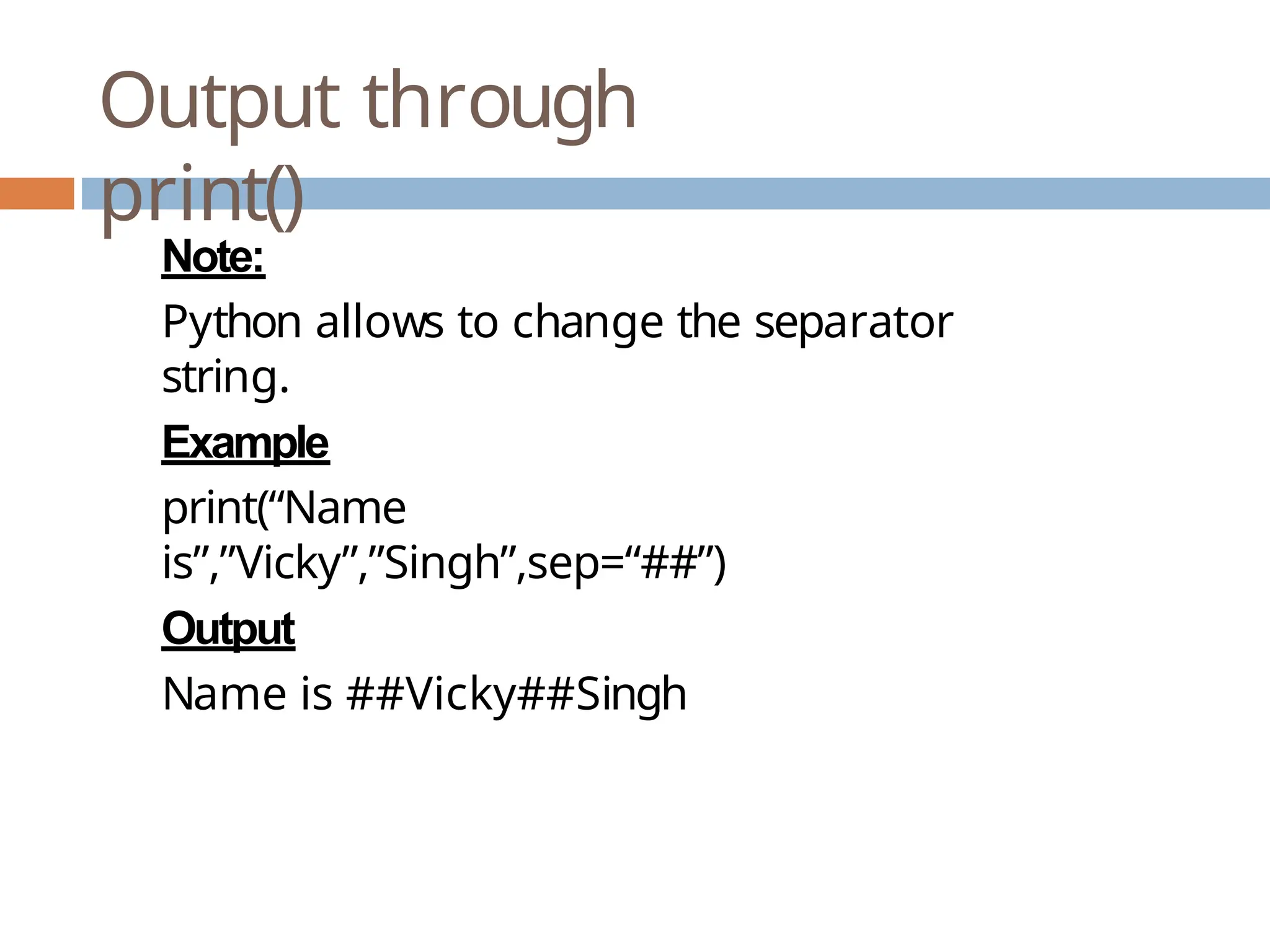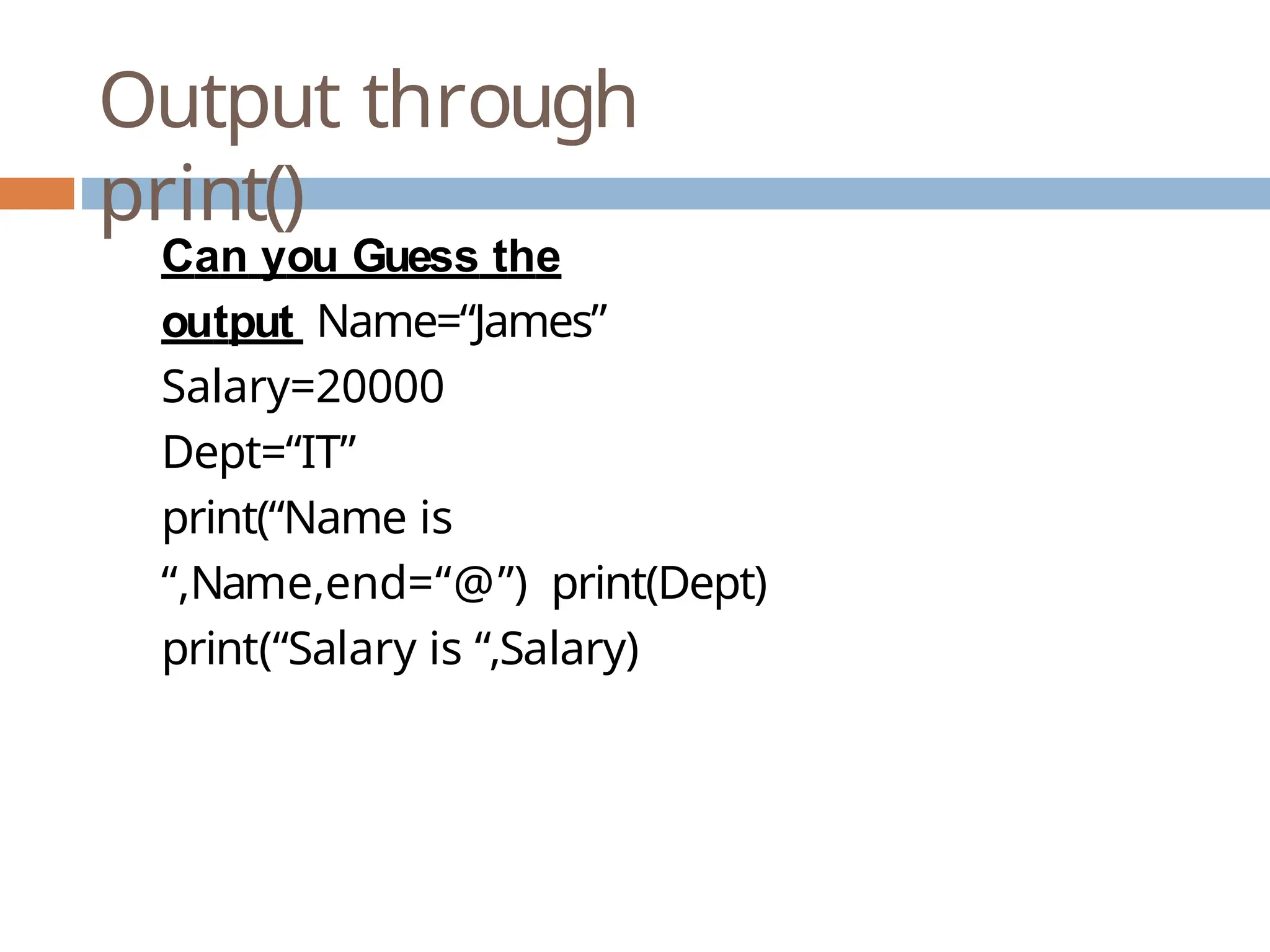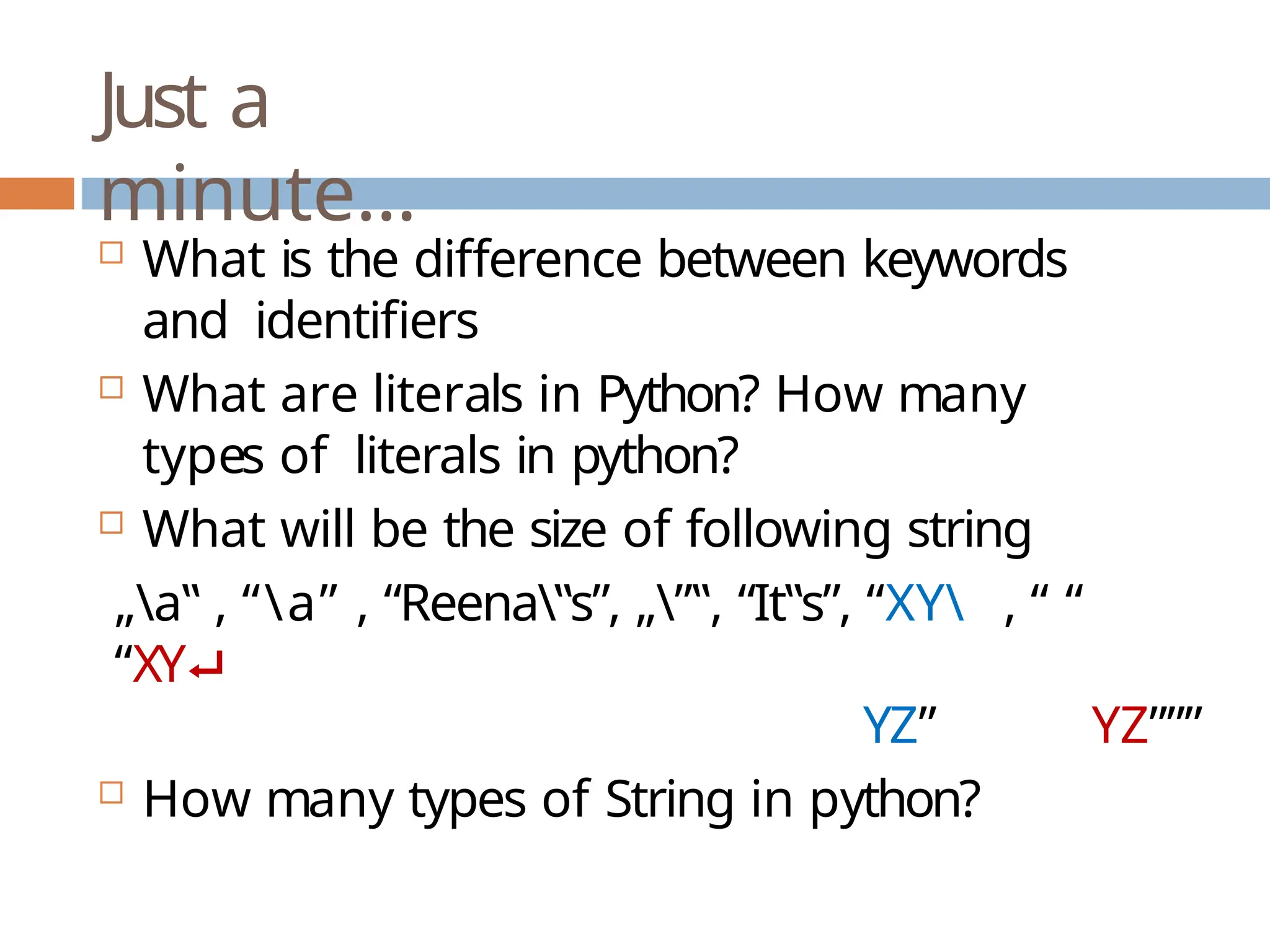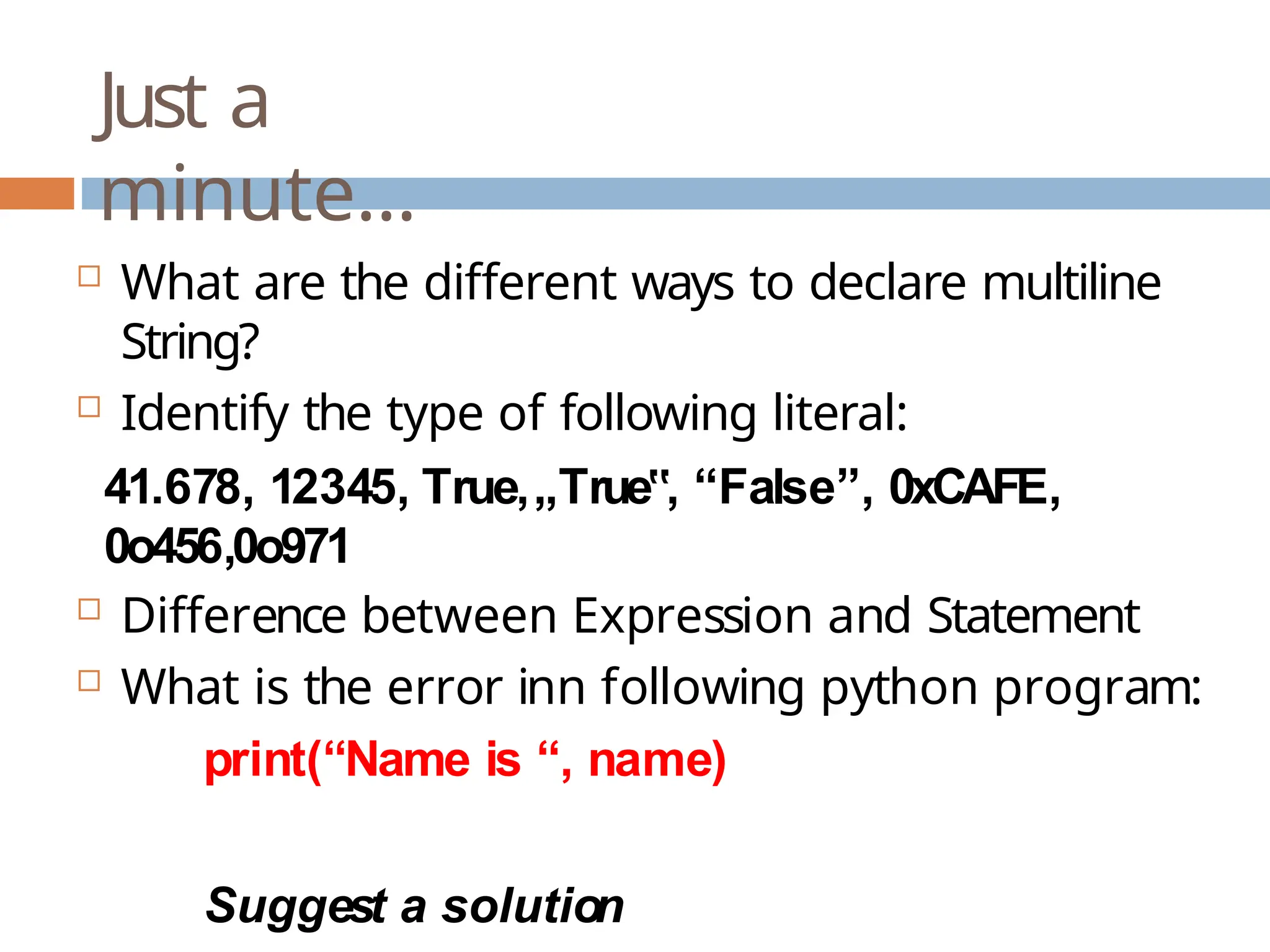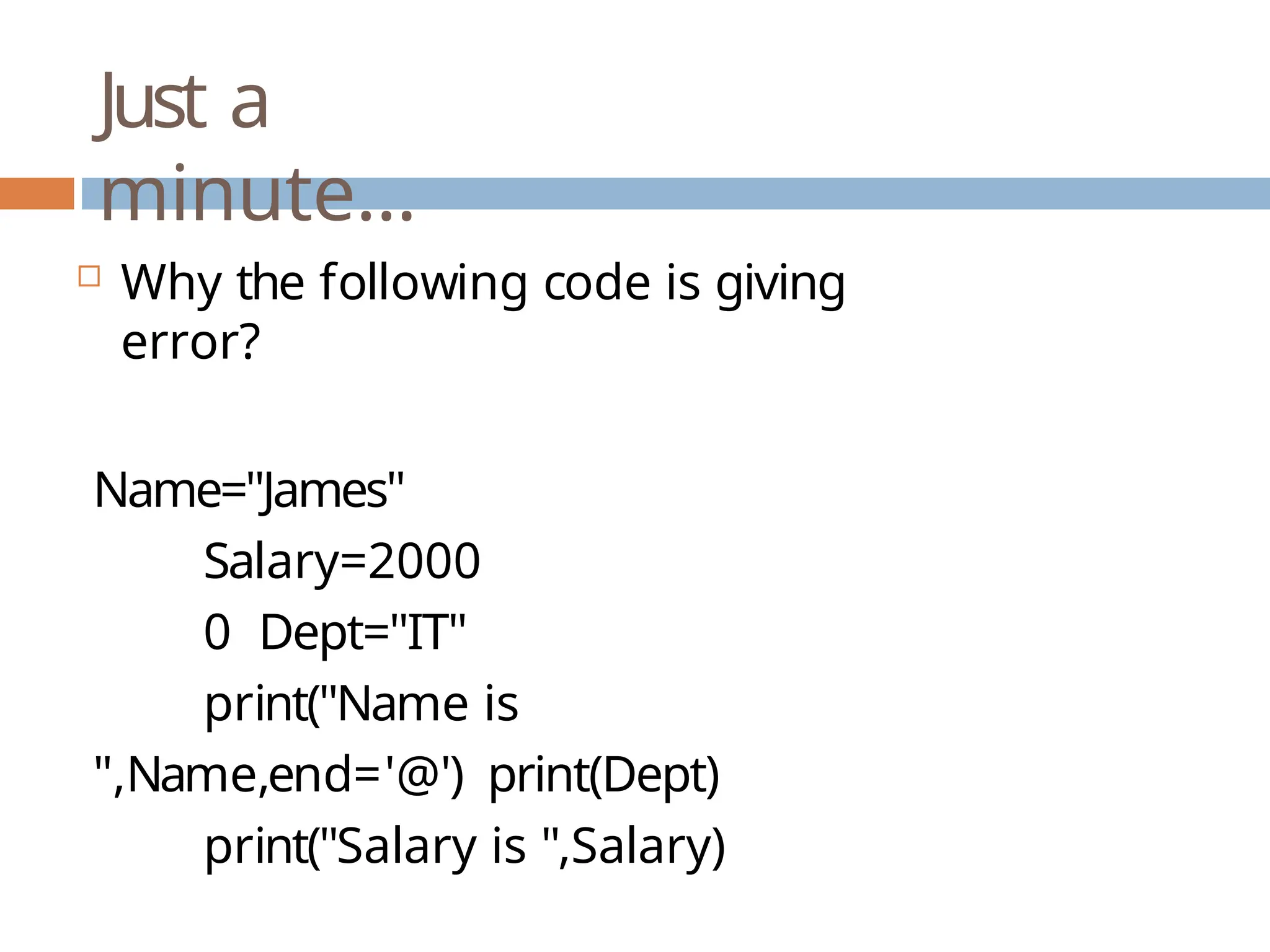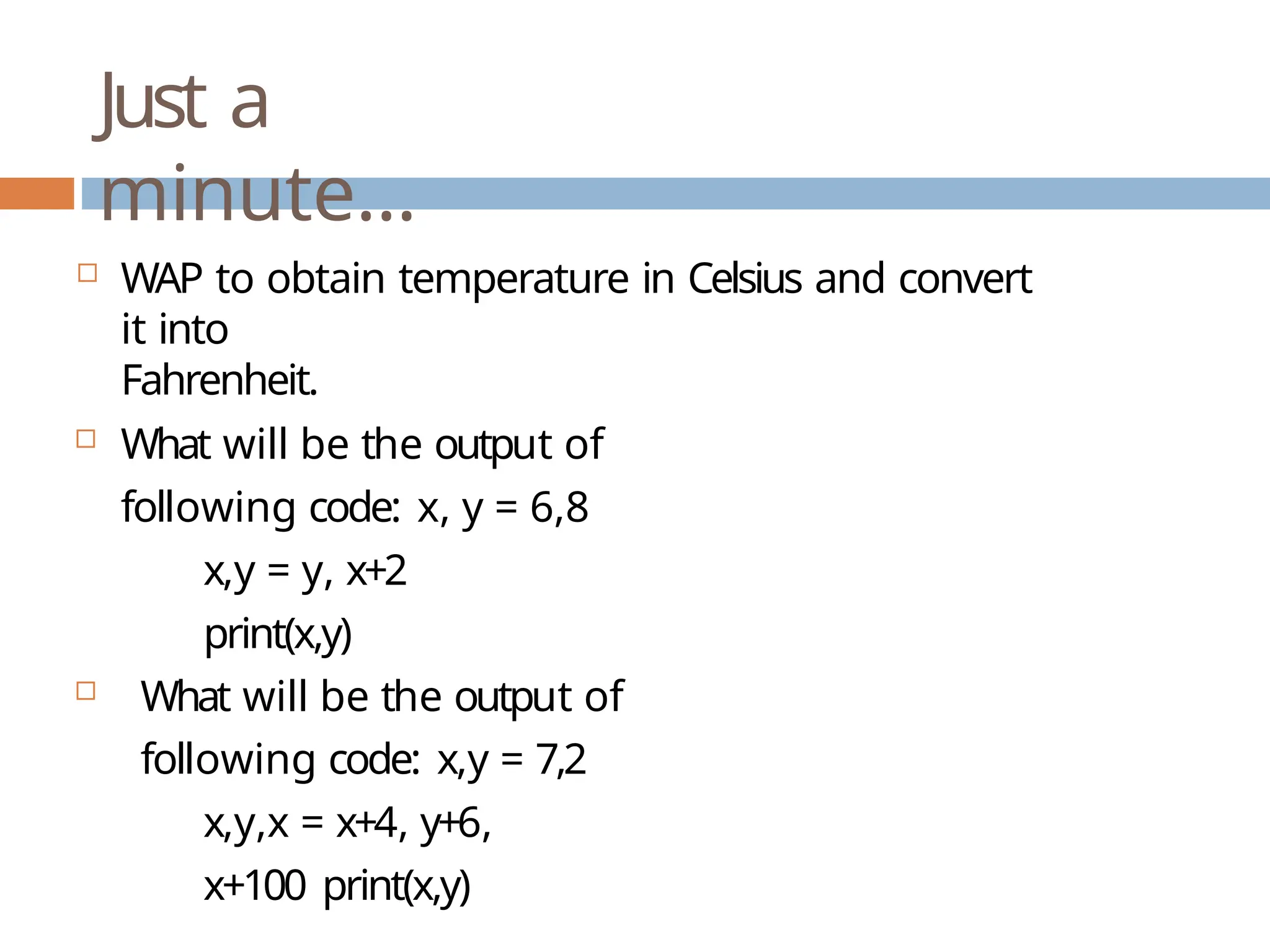The document provides an overview of Python programming fundamentals, covering its character set, keyword definitions, identifier rules, and different types of literals including strings, numerics, booleans, and special types. Additionally, it describes type conversion, input and output methods, operators, punctuators, and commenting styles in Python. Overall, it serves as a foundational guide for understanding Python syntax and data management.
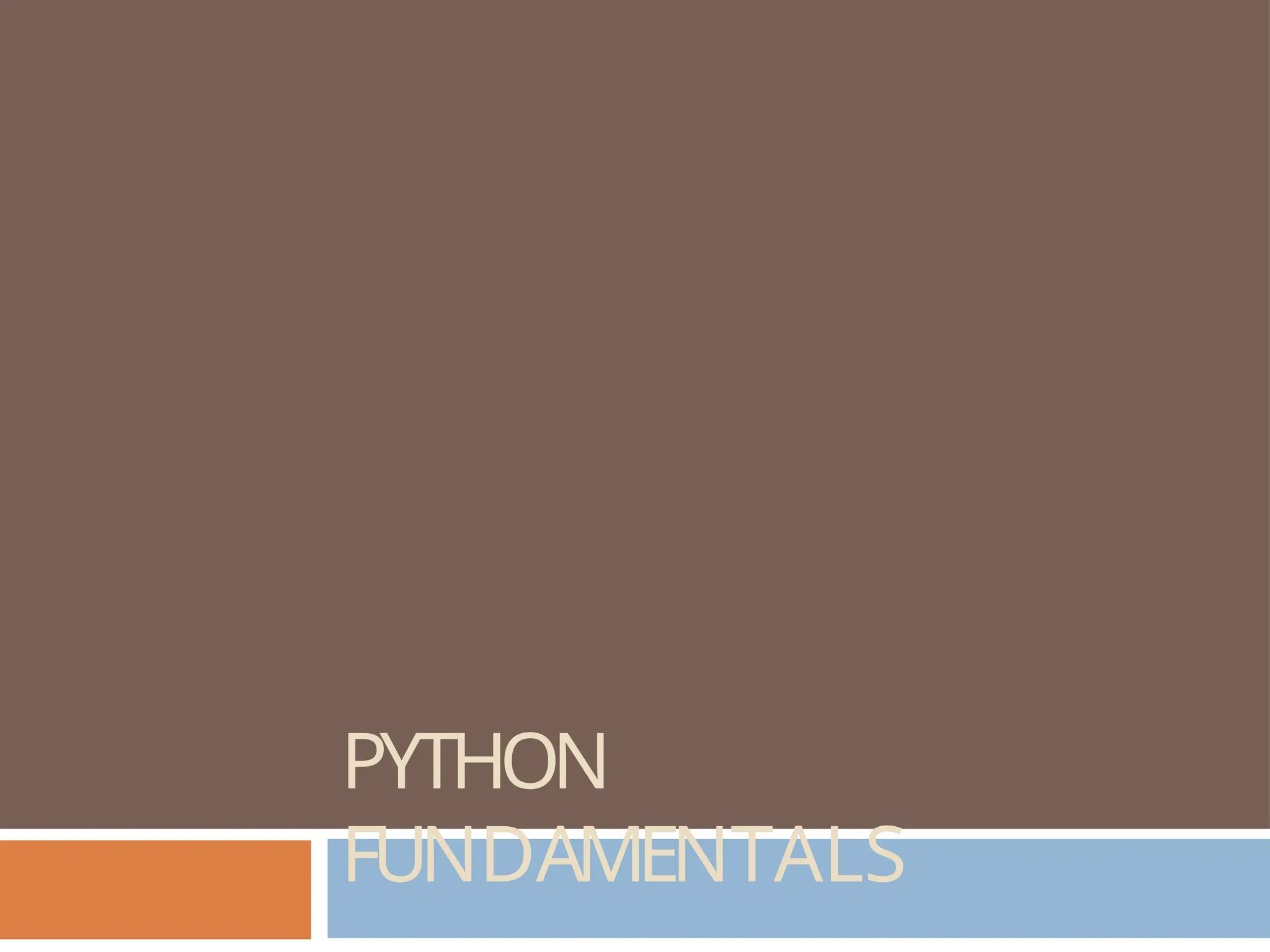
![Python Character Set Is a set of valid characters that python can recognize. A character represent letters, digits or any symbol. Python support UNICODE encoding standard. Following are the Python character set Letter s Digits : A-Z, a-z : 0-9 Special symbols :space +-*/()~`!@#$%^ & [{ ]};:‟”,<.>/? White spaces : Blank space, Enter, Tab Other character : python can process all ASCII and UNICODE as a part of data or literal](https://image.slidesharecdn.com/ch-3featuresofpython-250103121349-65d5f002/75/CH-3-FEATURES-OF-PYTHON-data-types-token-2-2048.jpg)
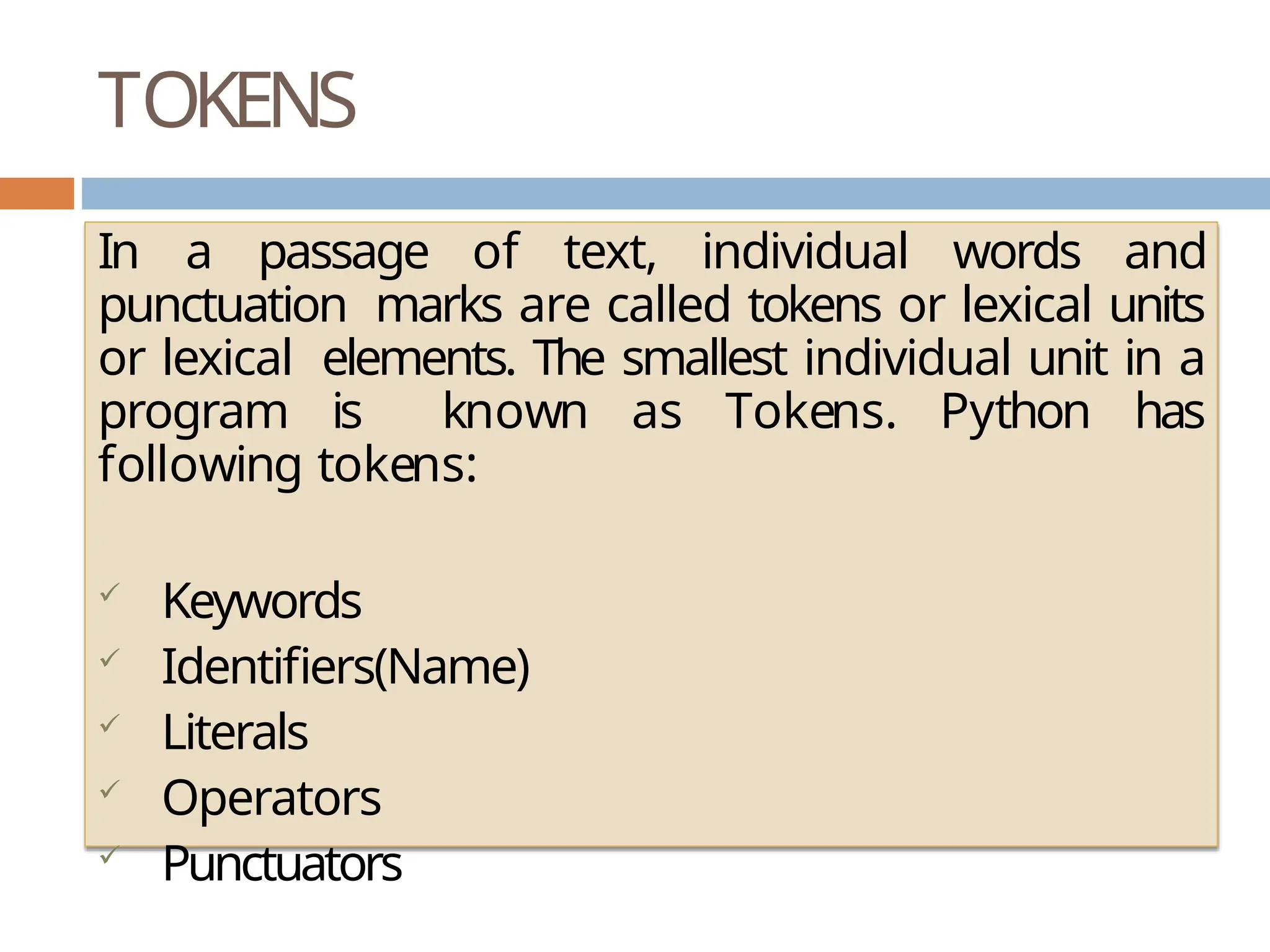

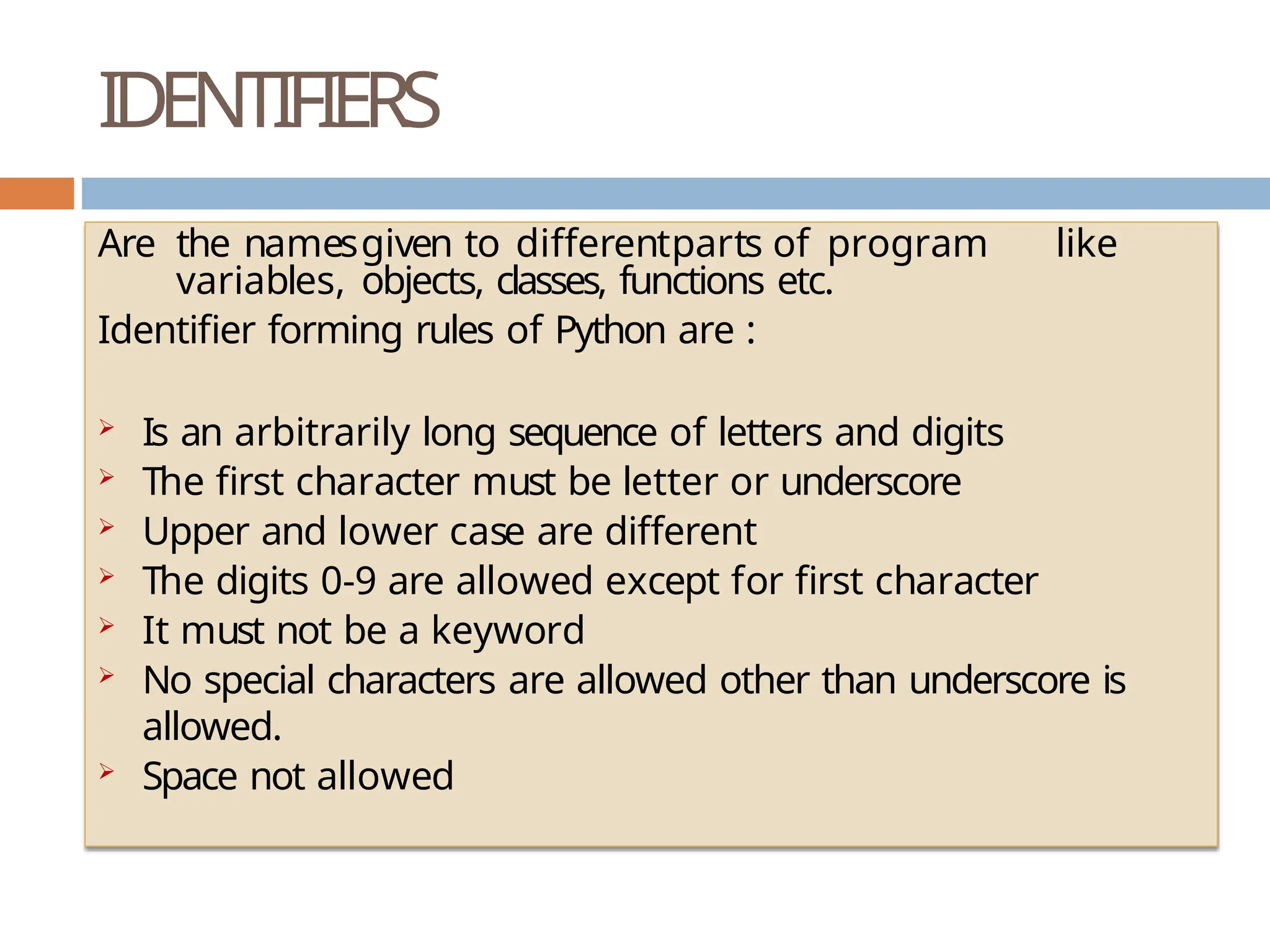
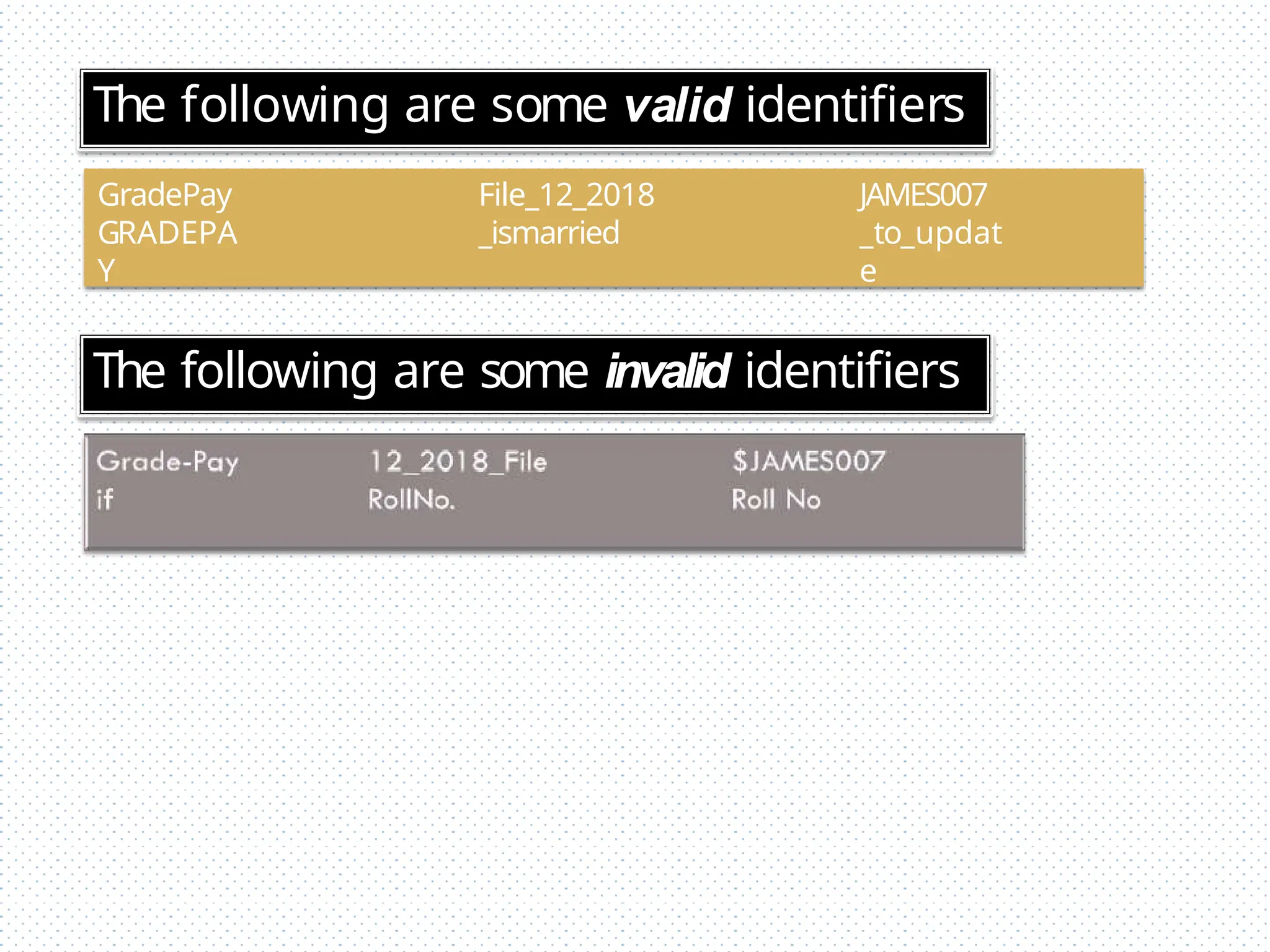
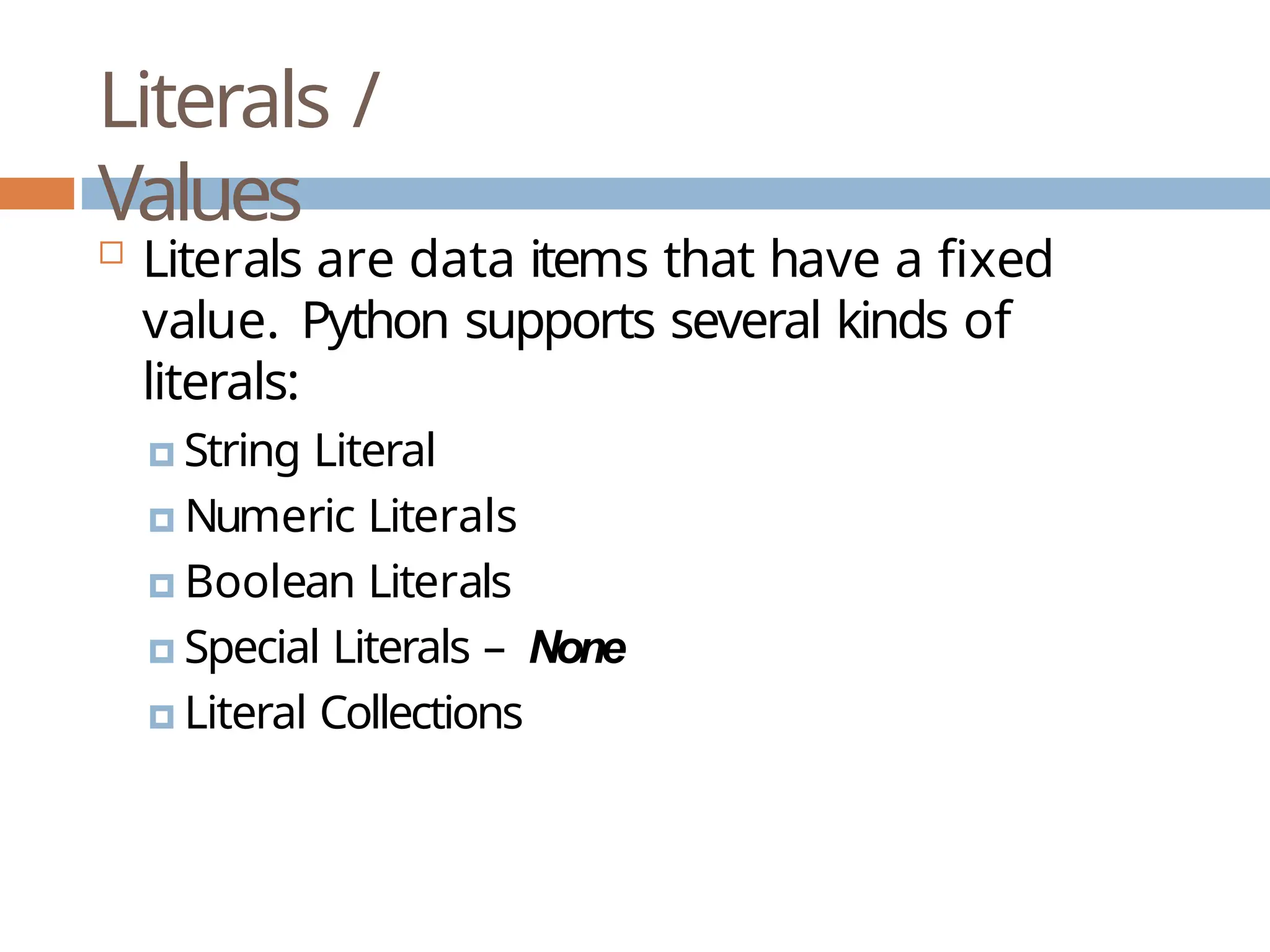
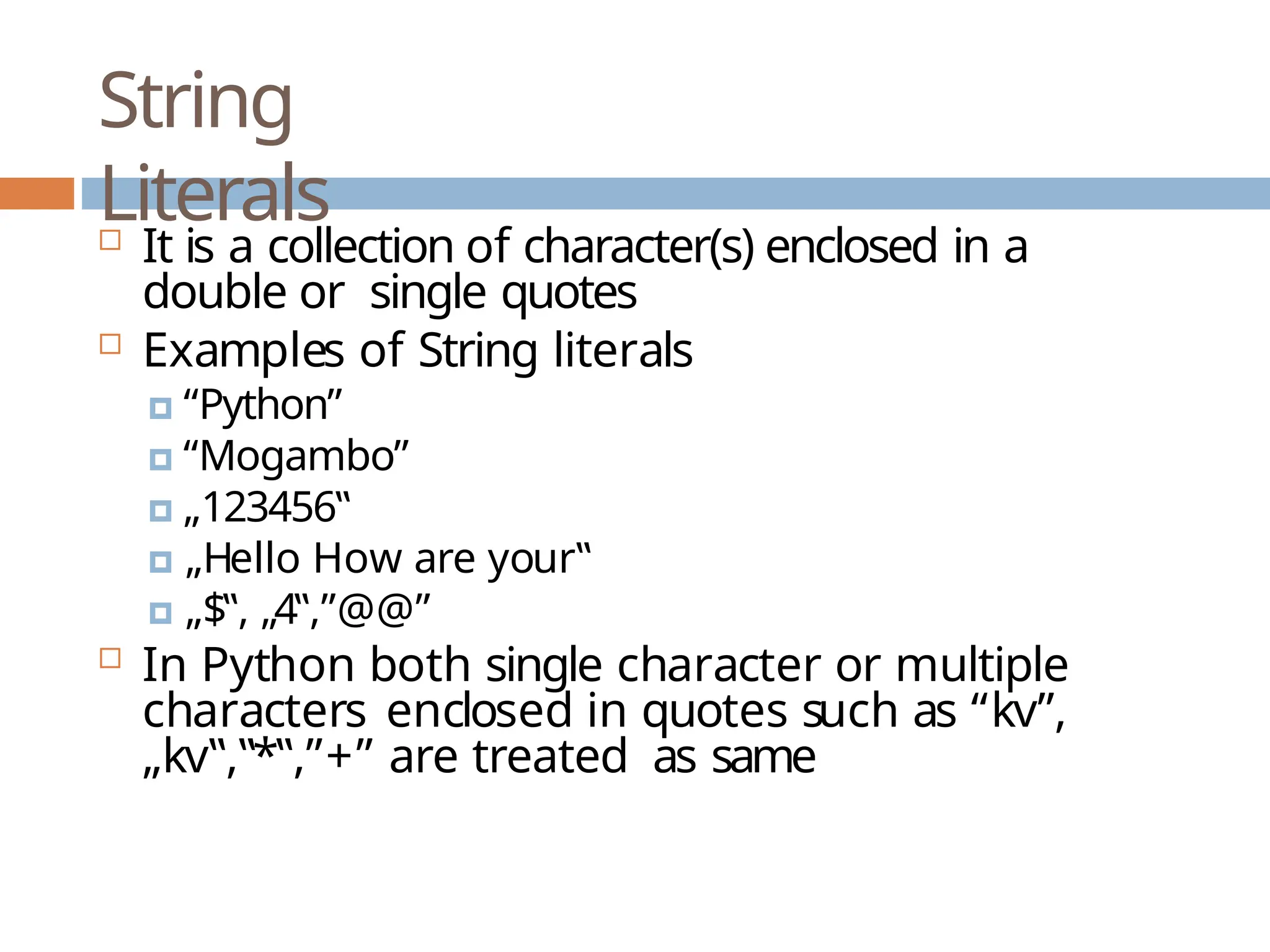

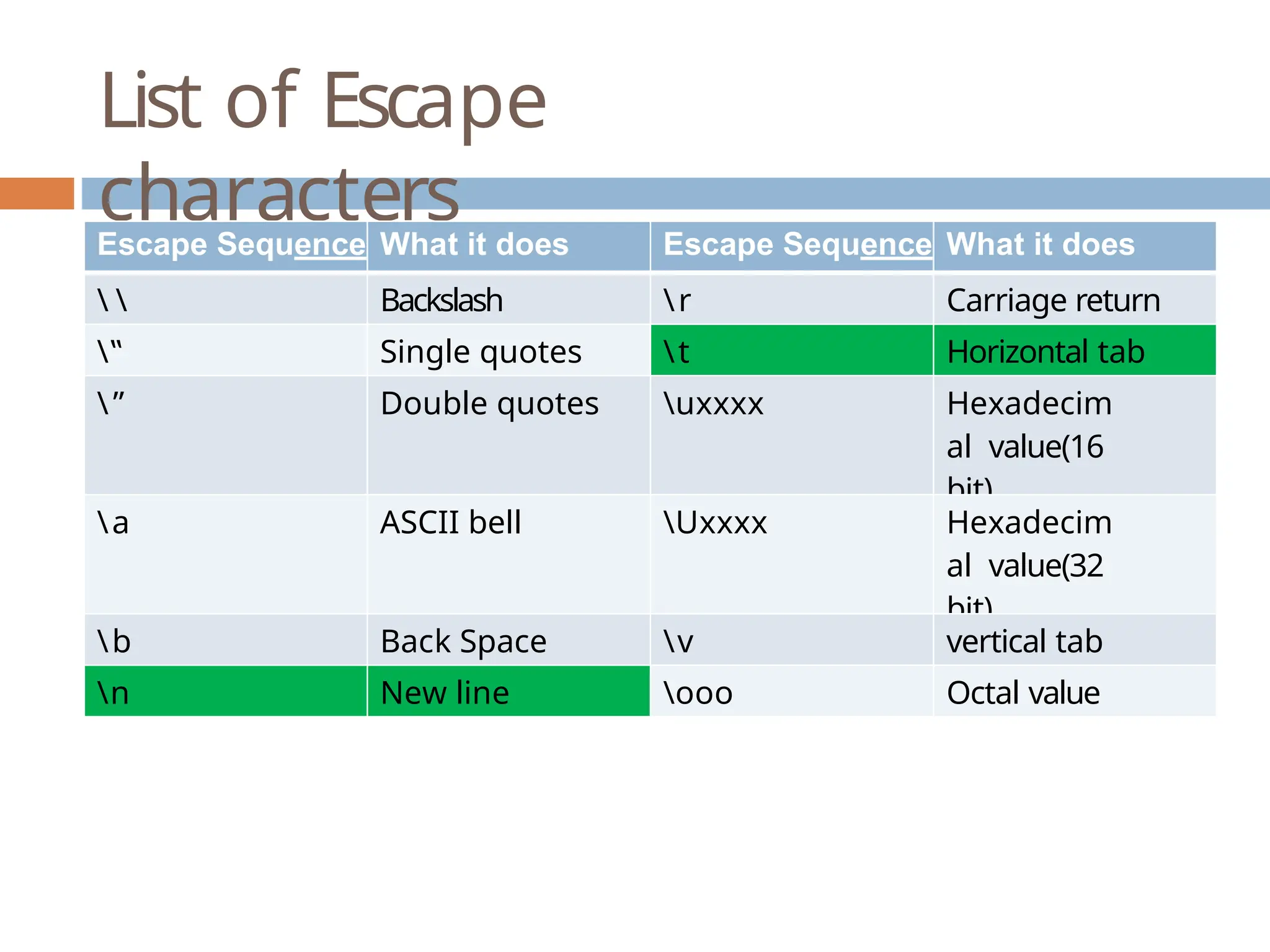
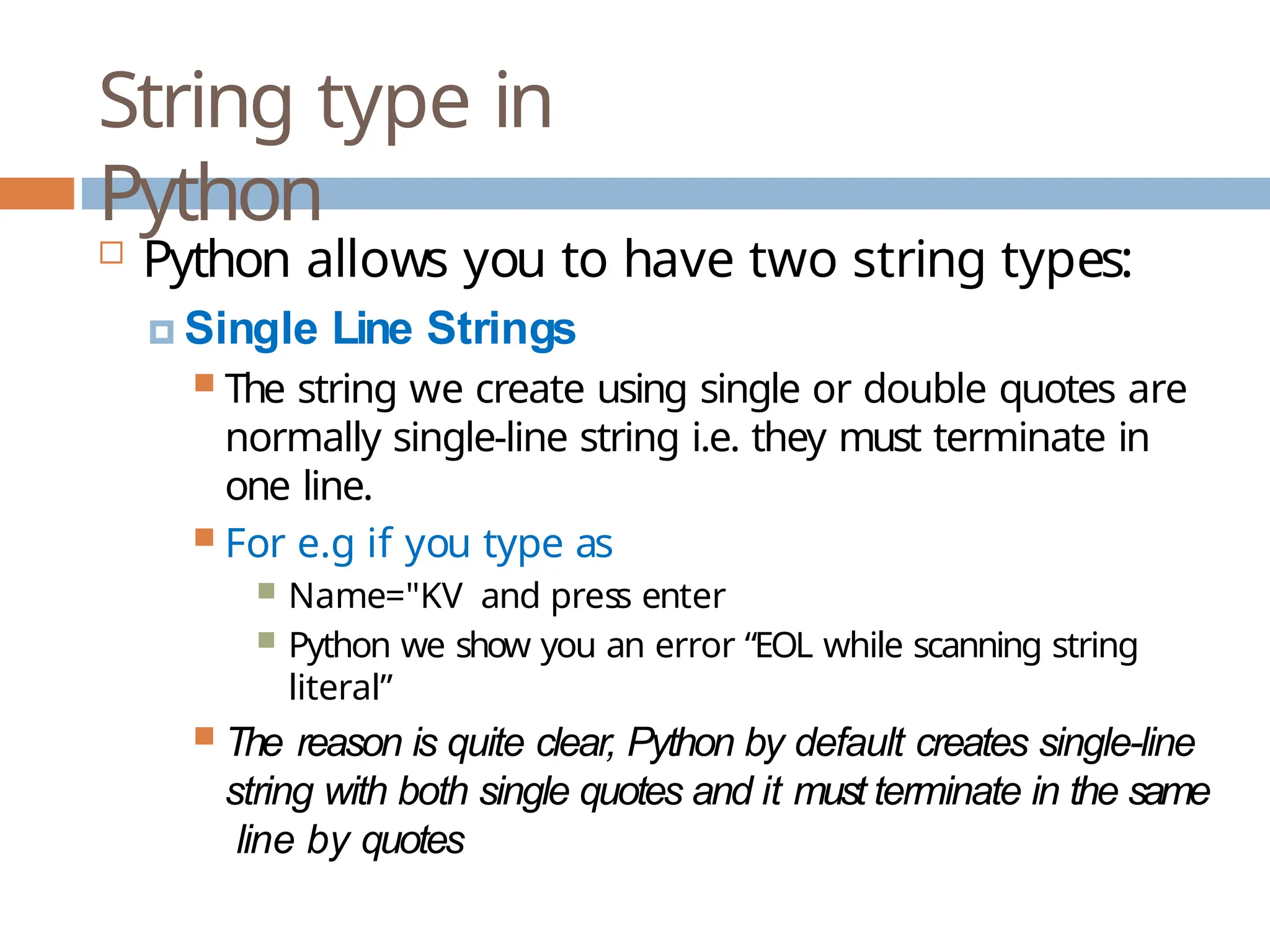
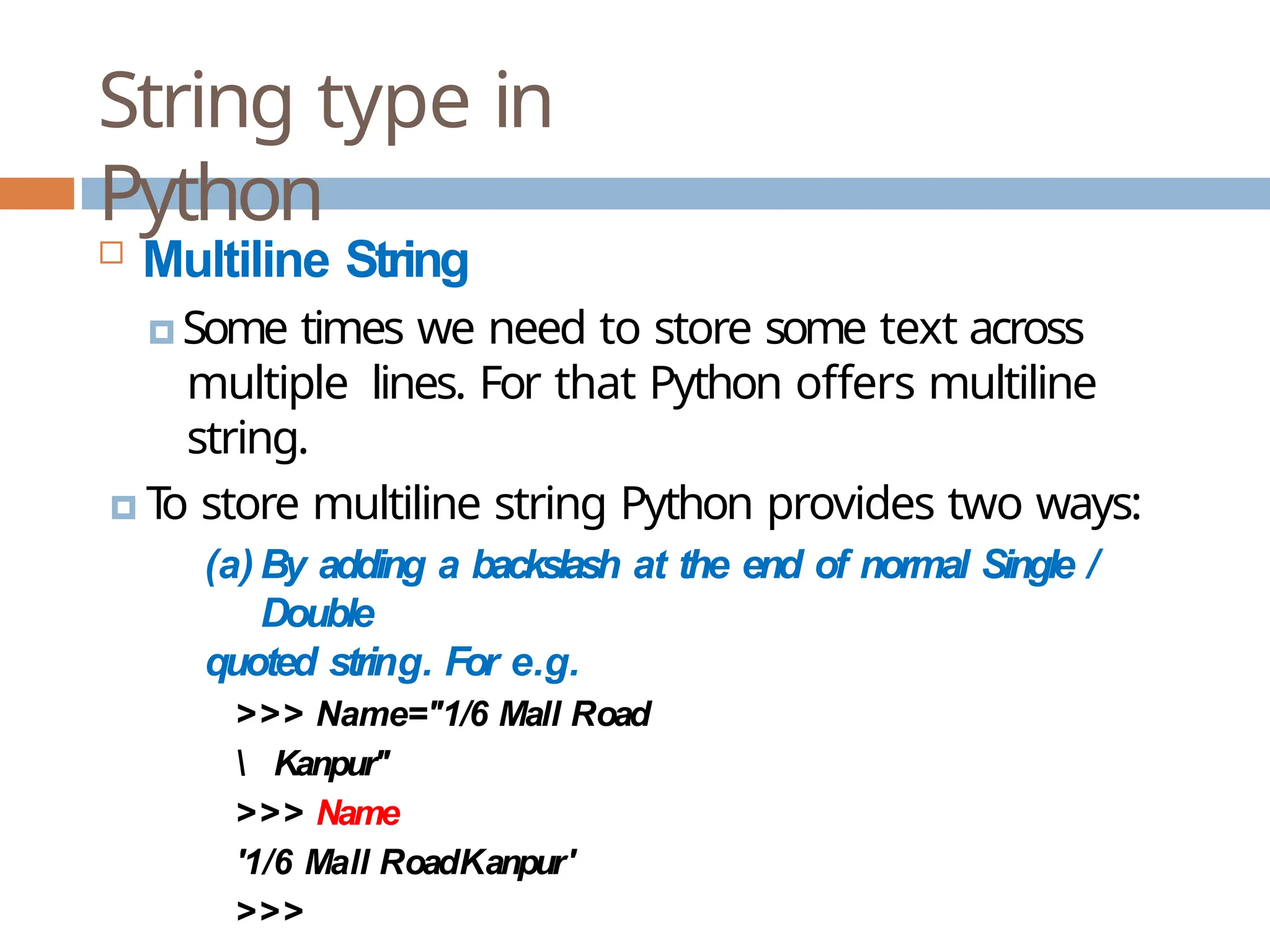

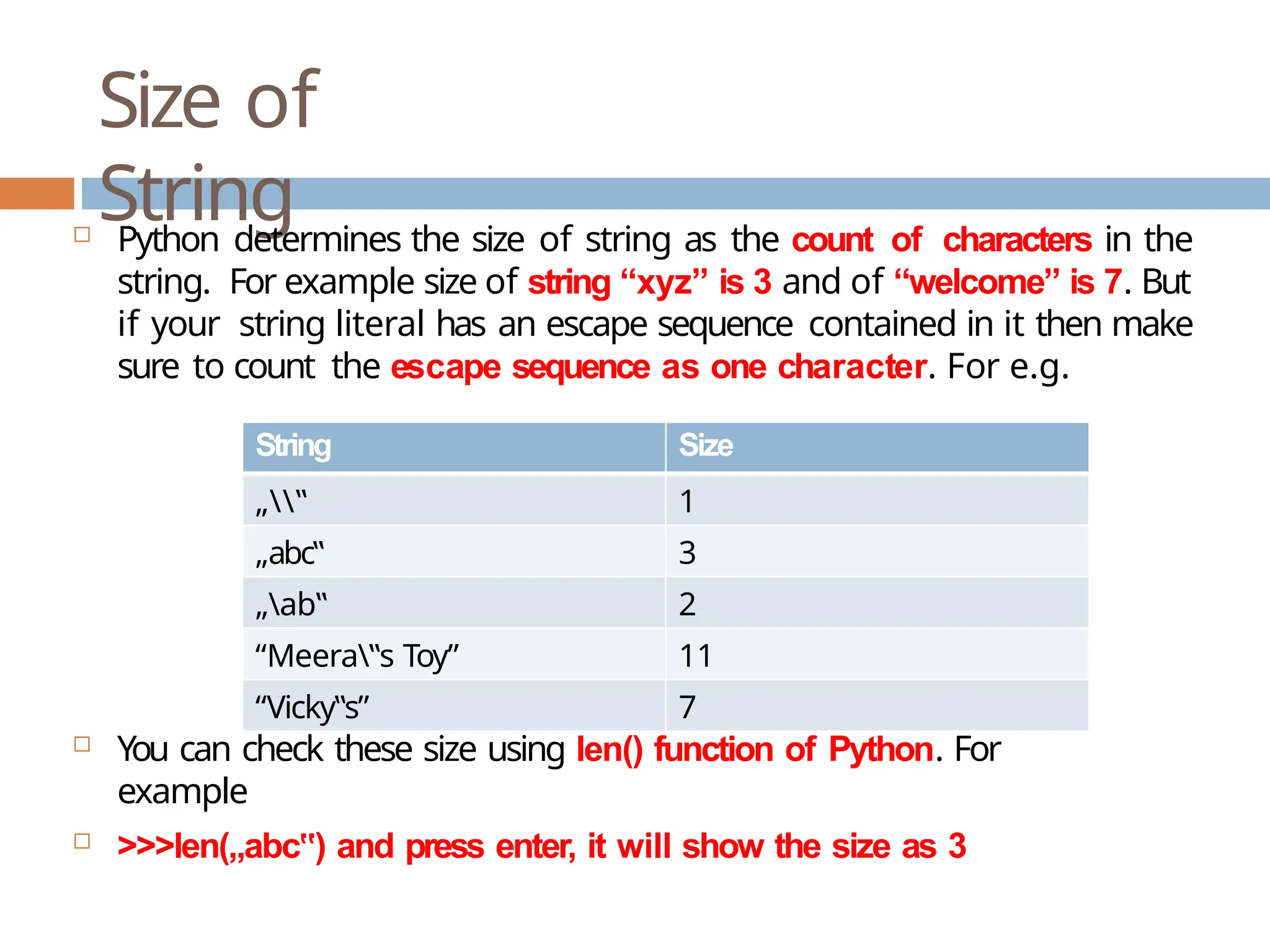


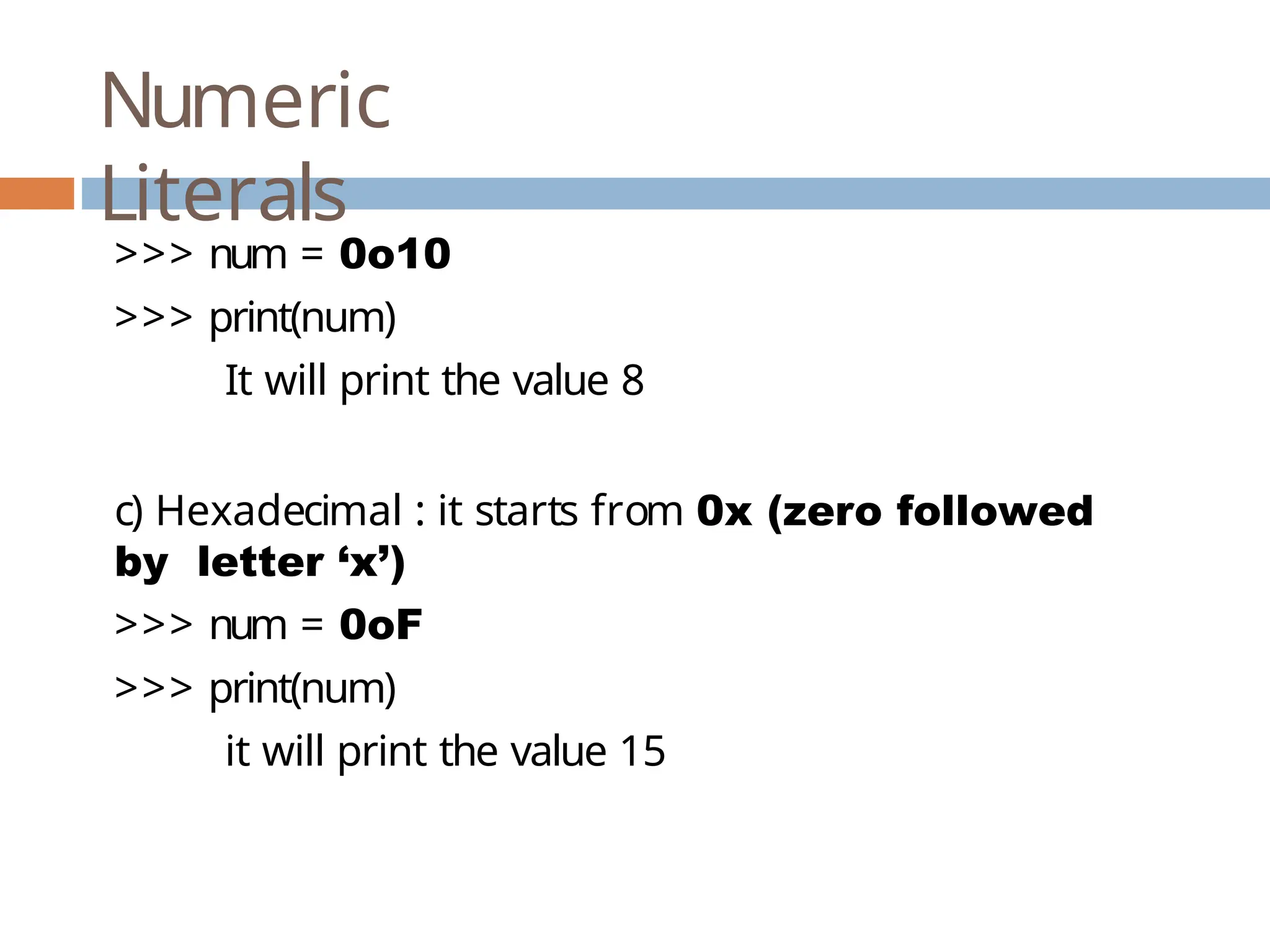
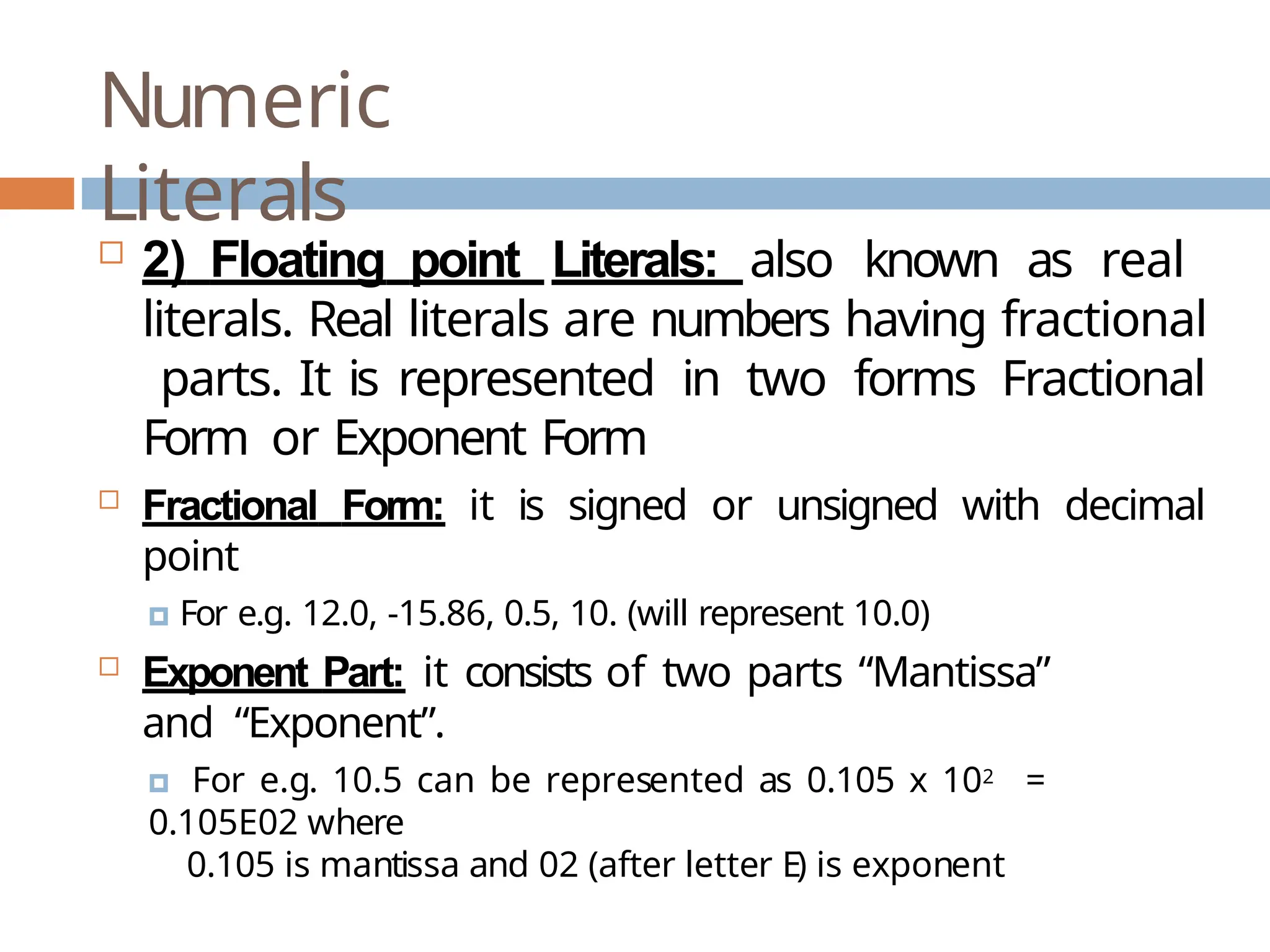

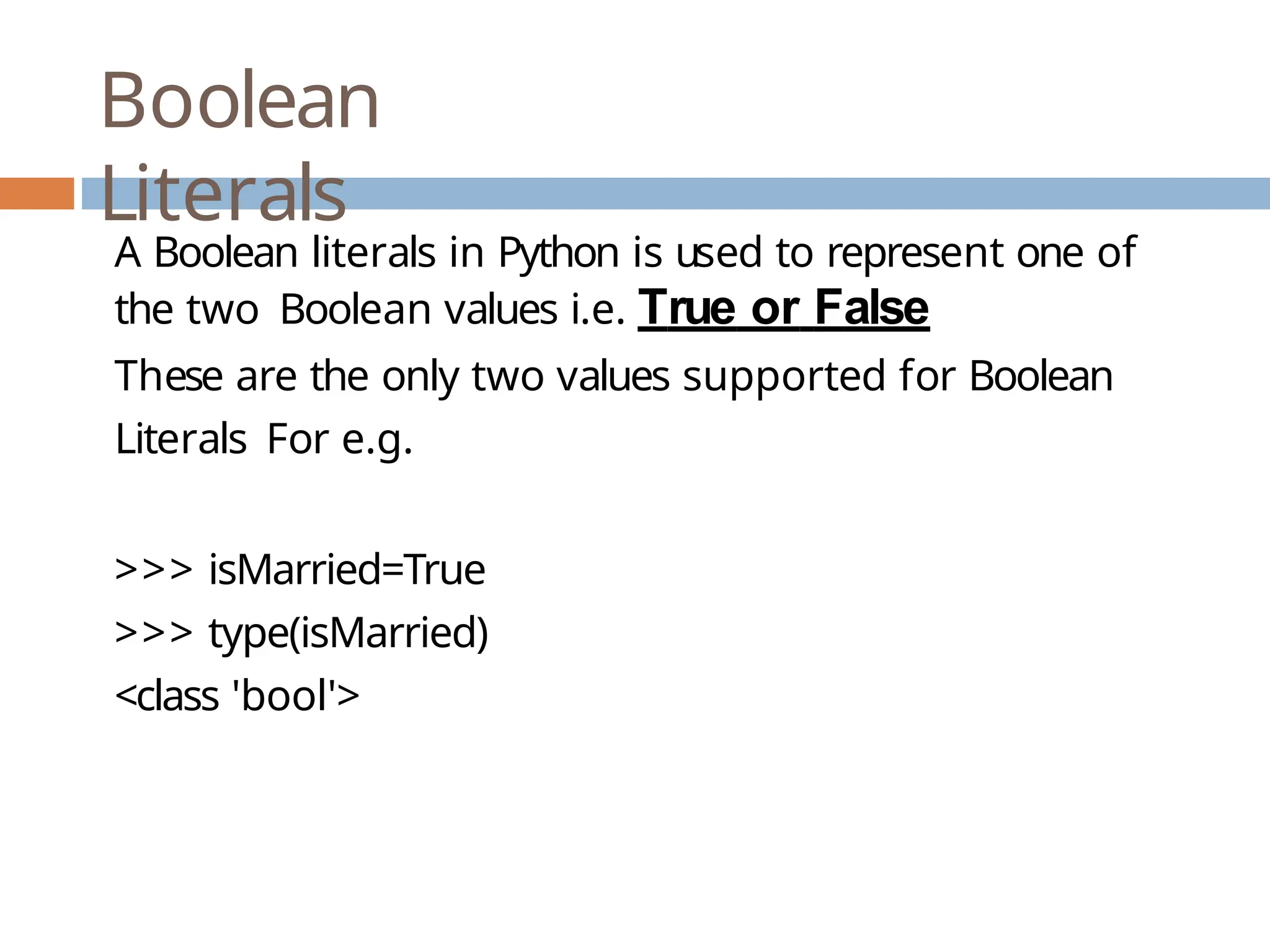
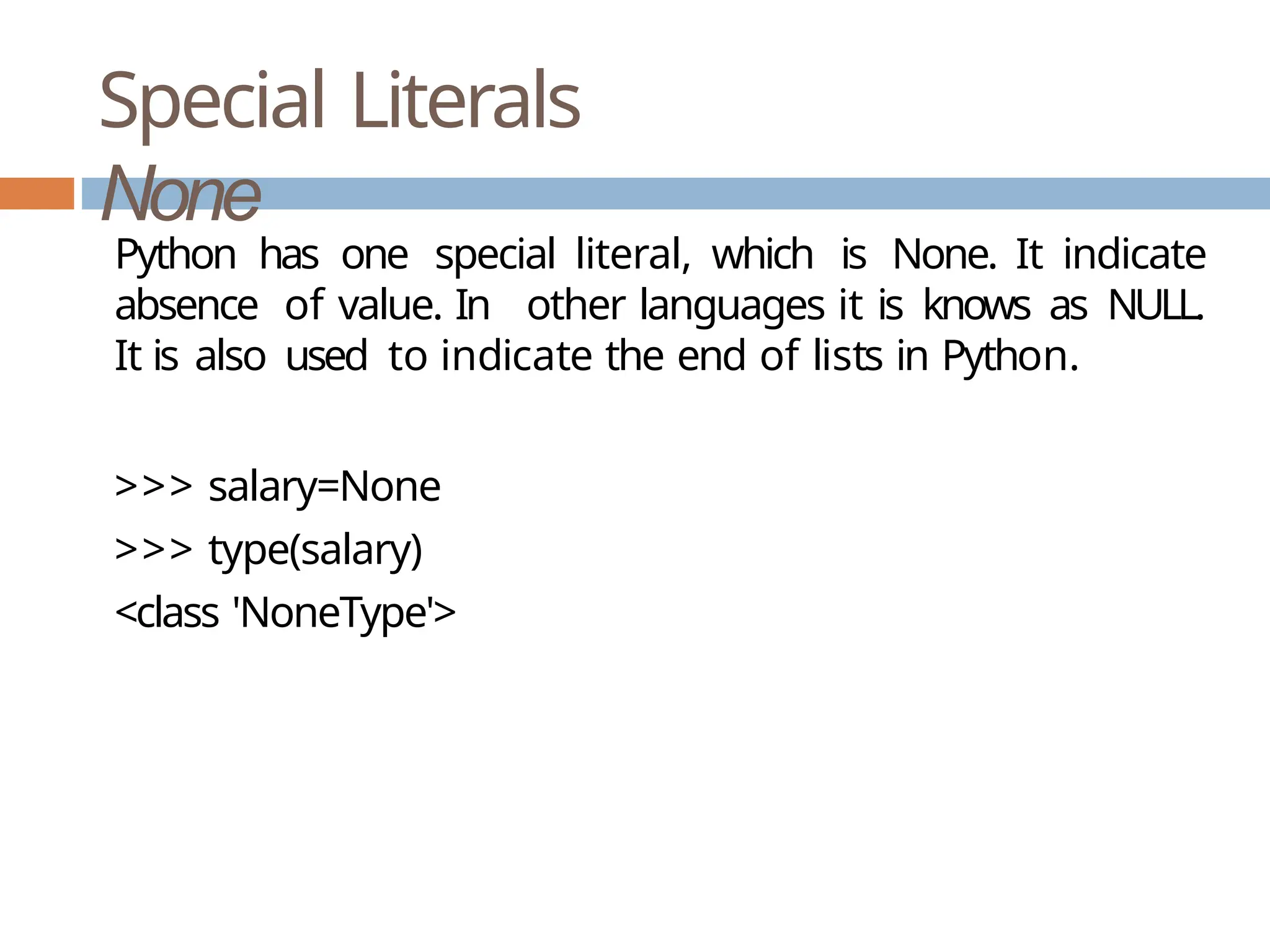


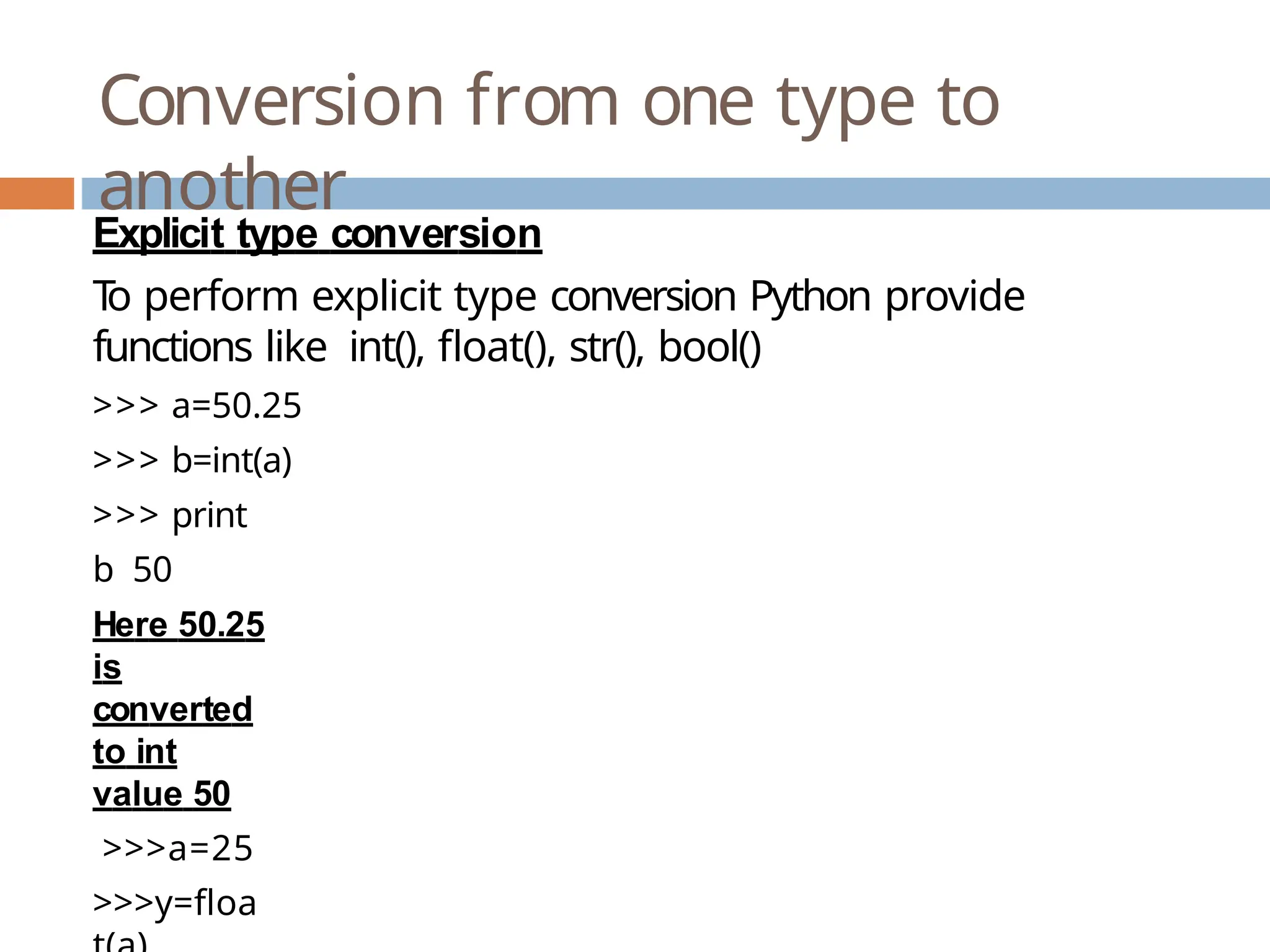
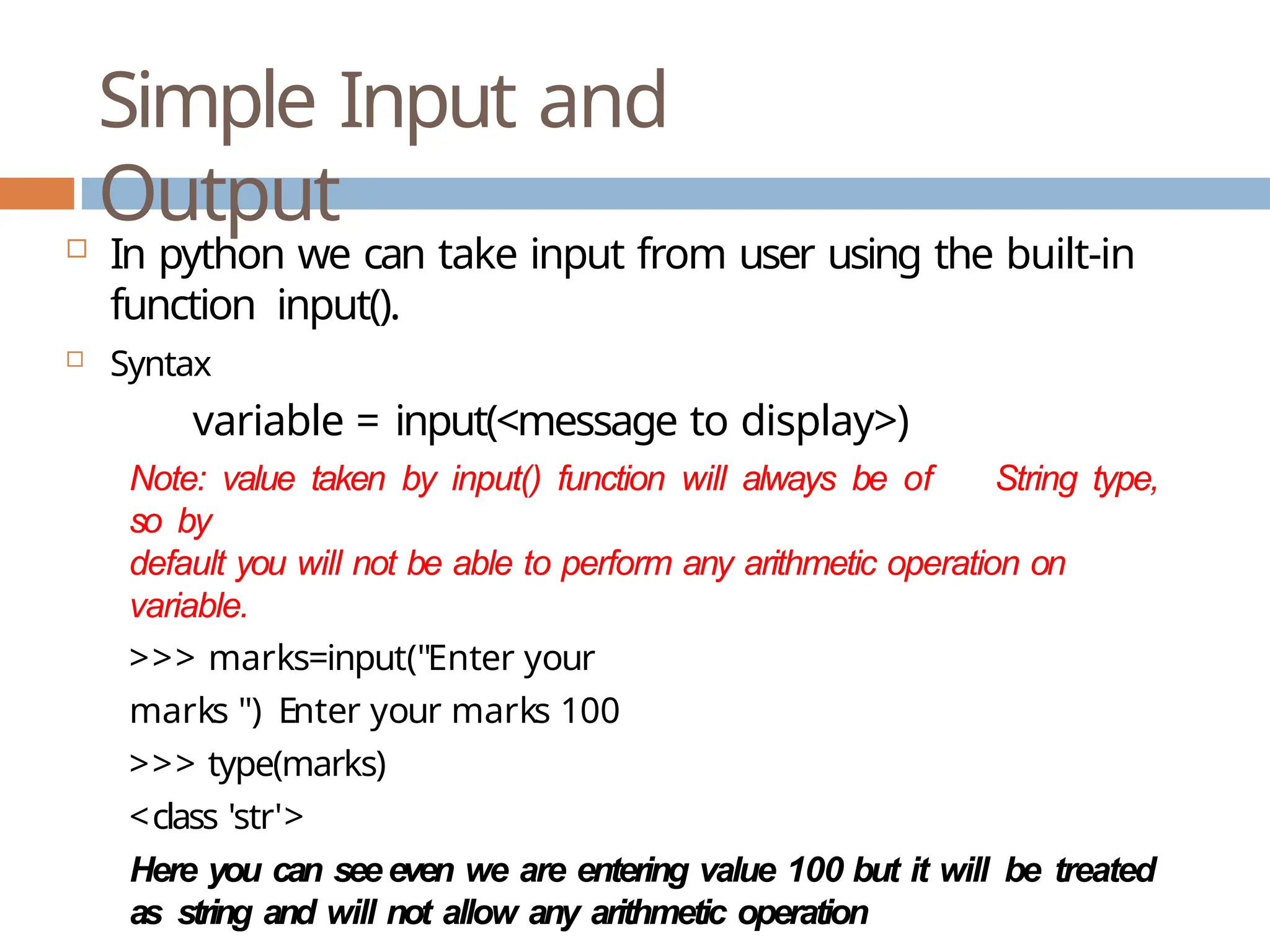

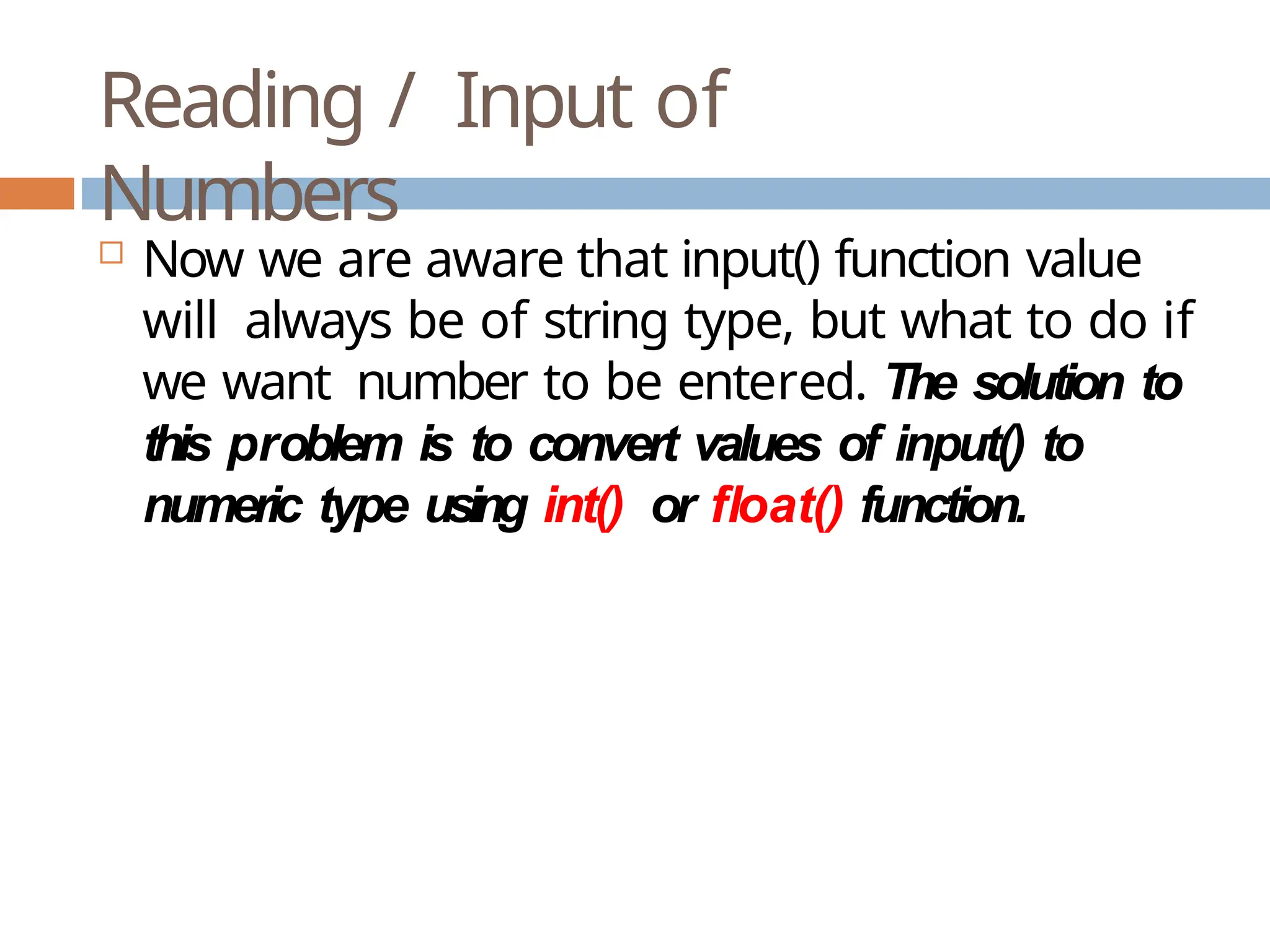
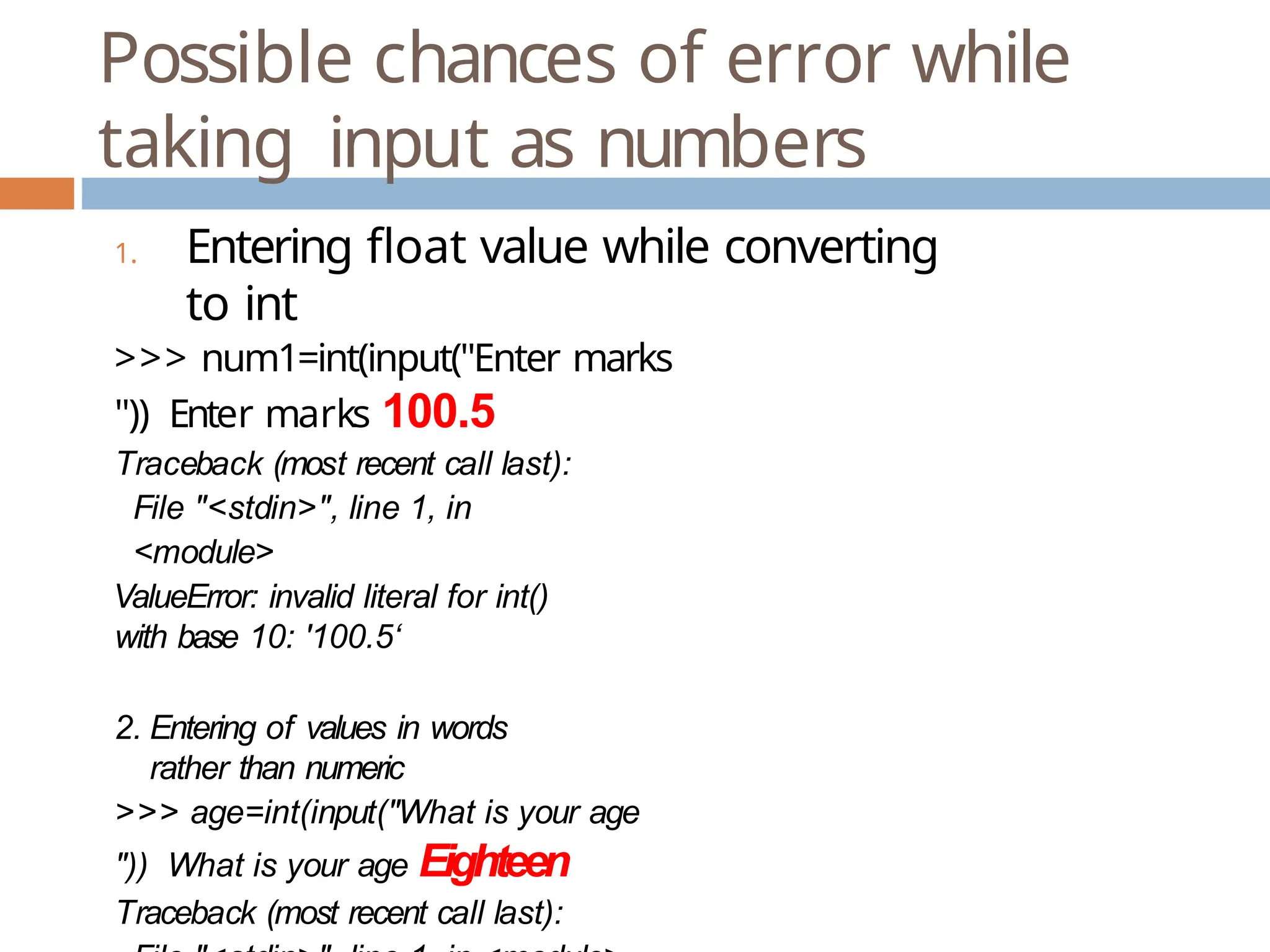
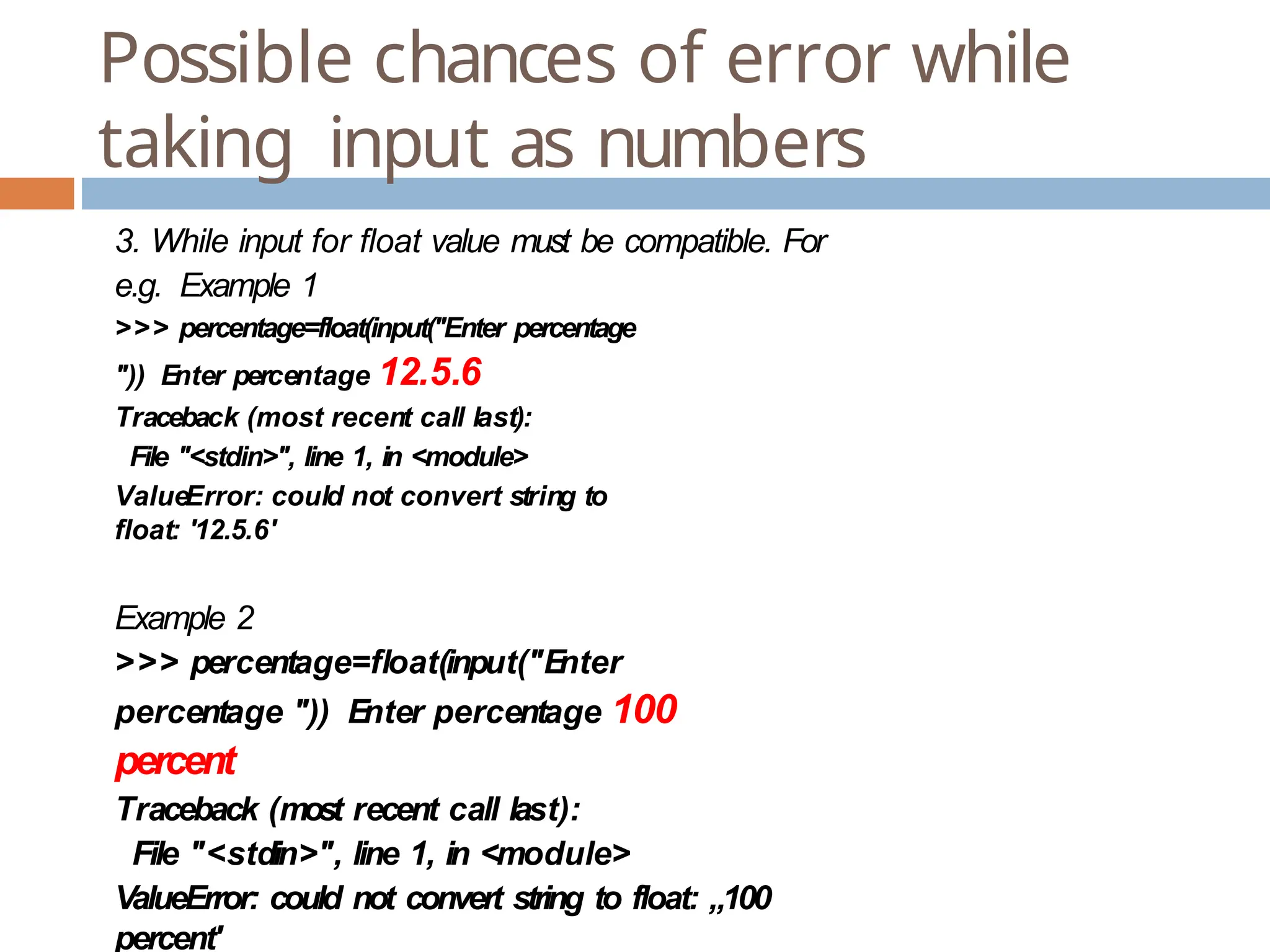
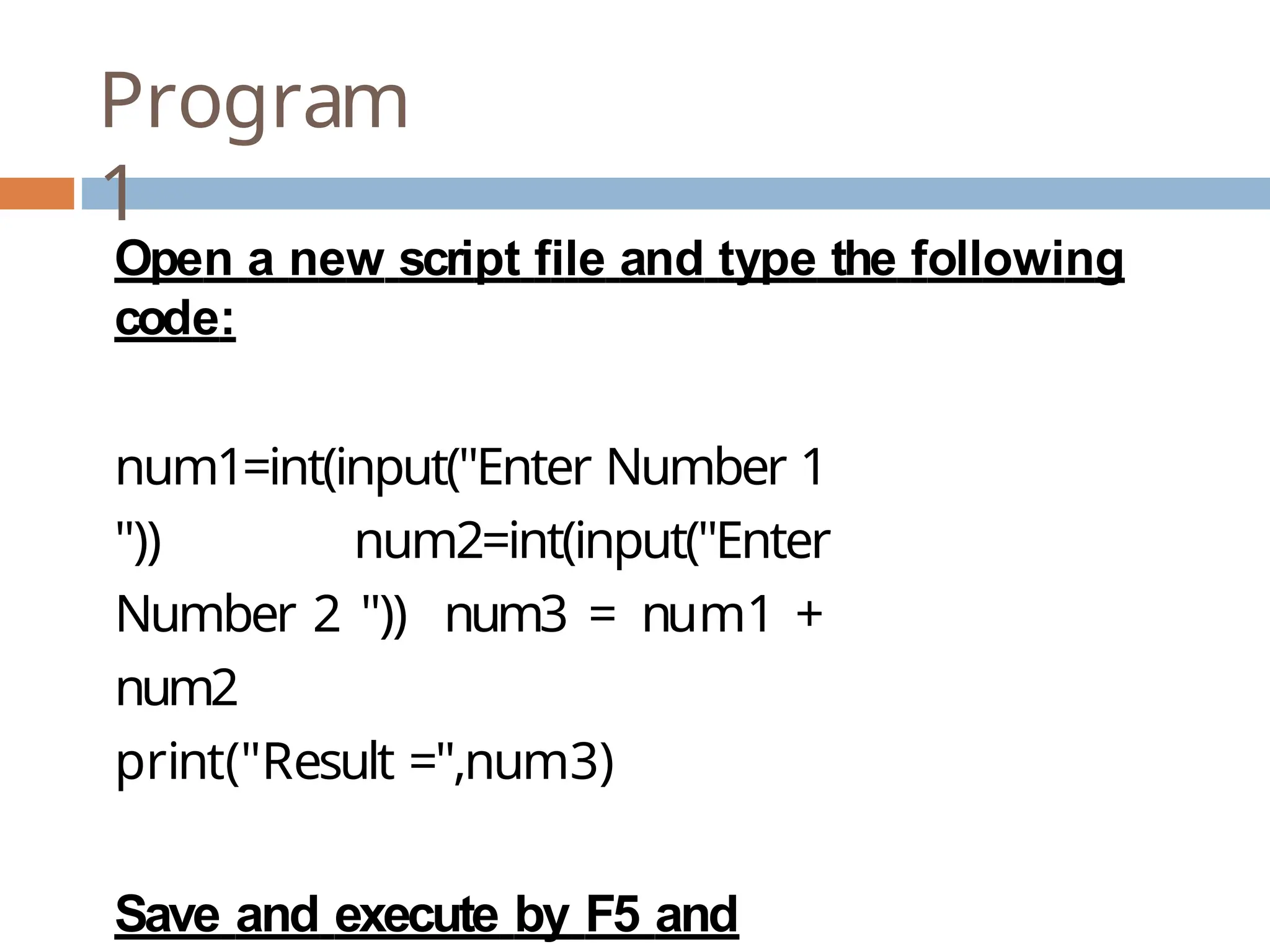
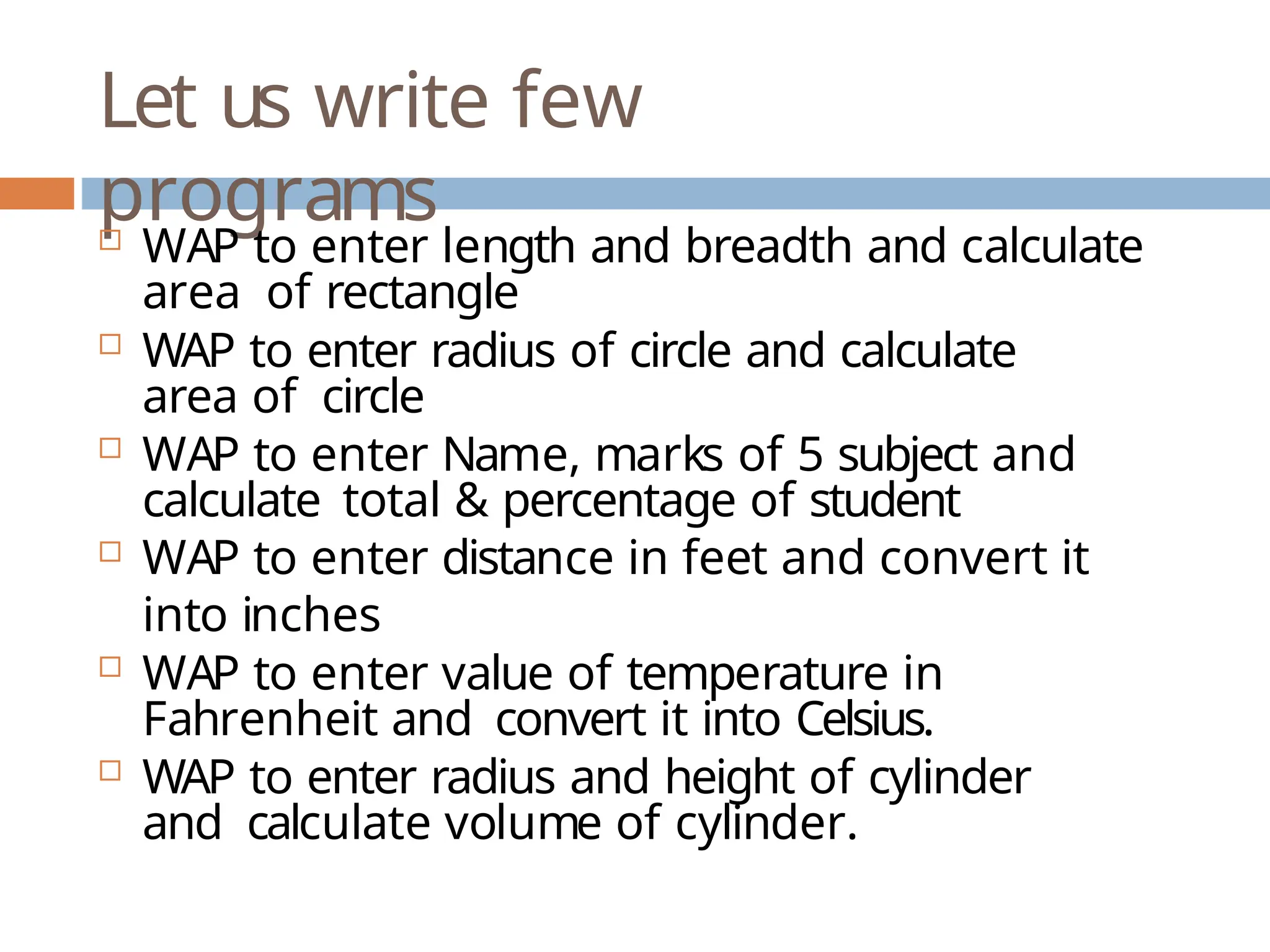
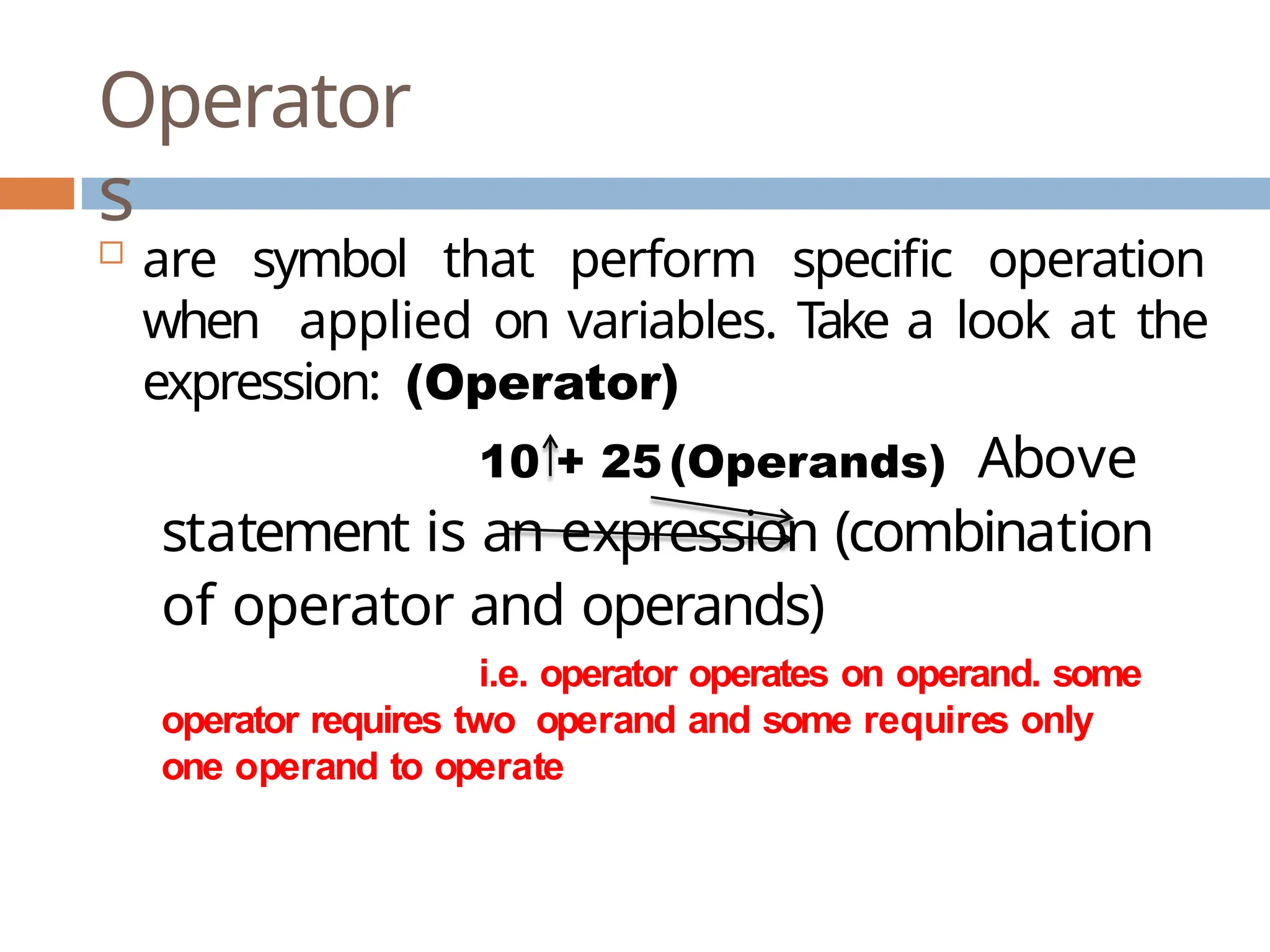
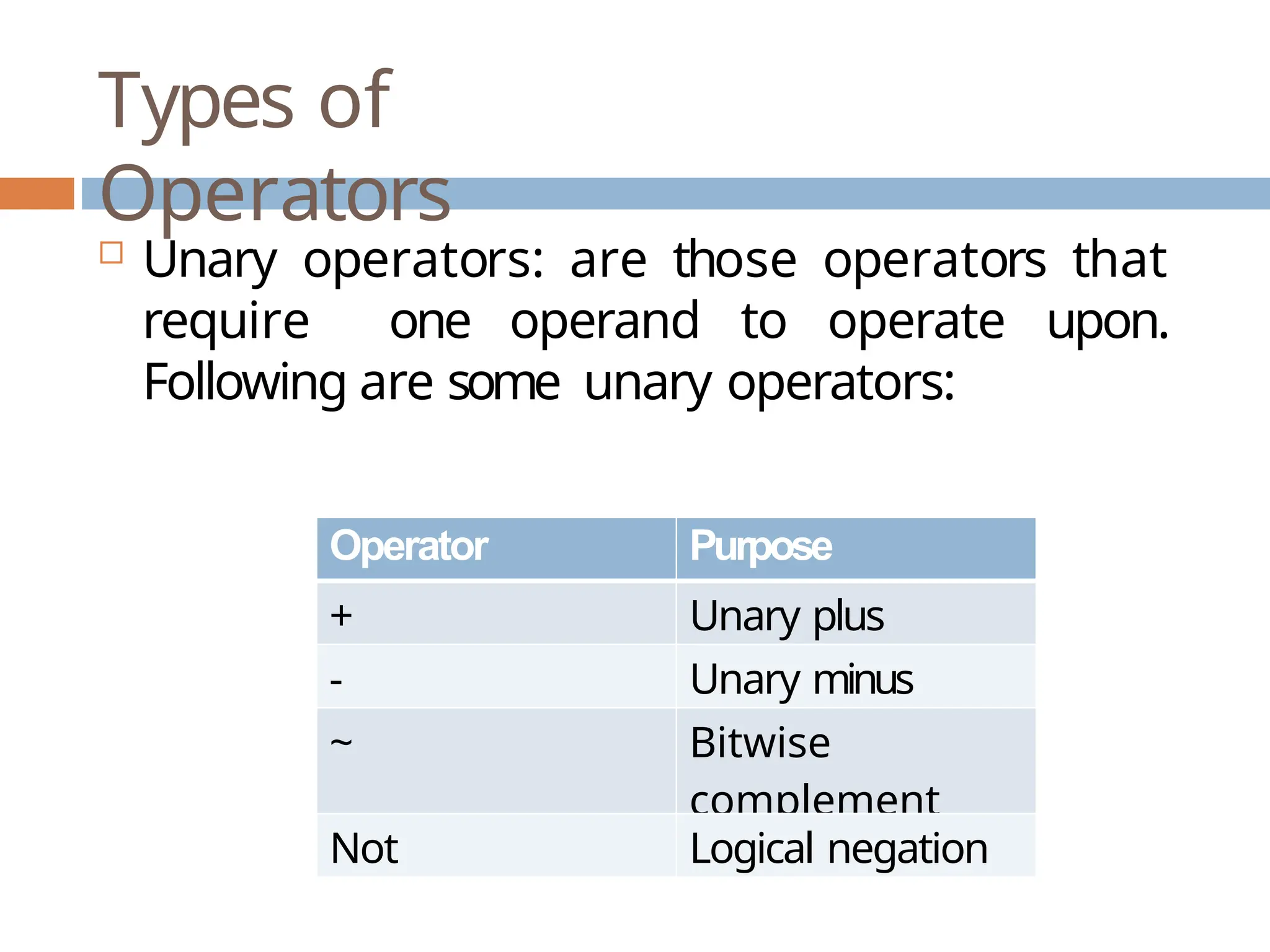



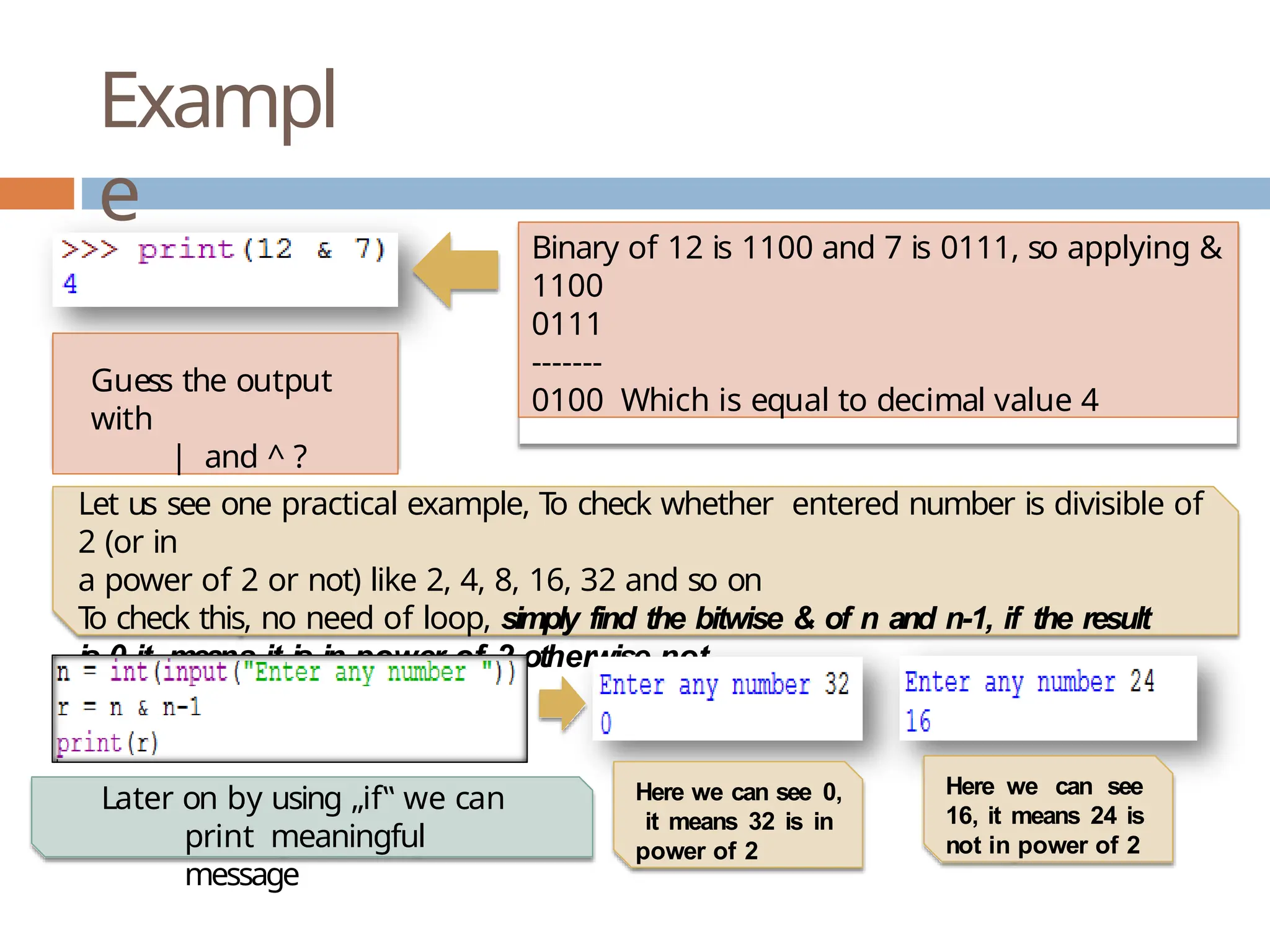
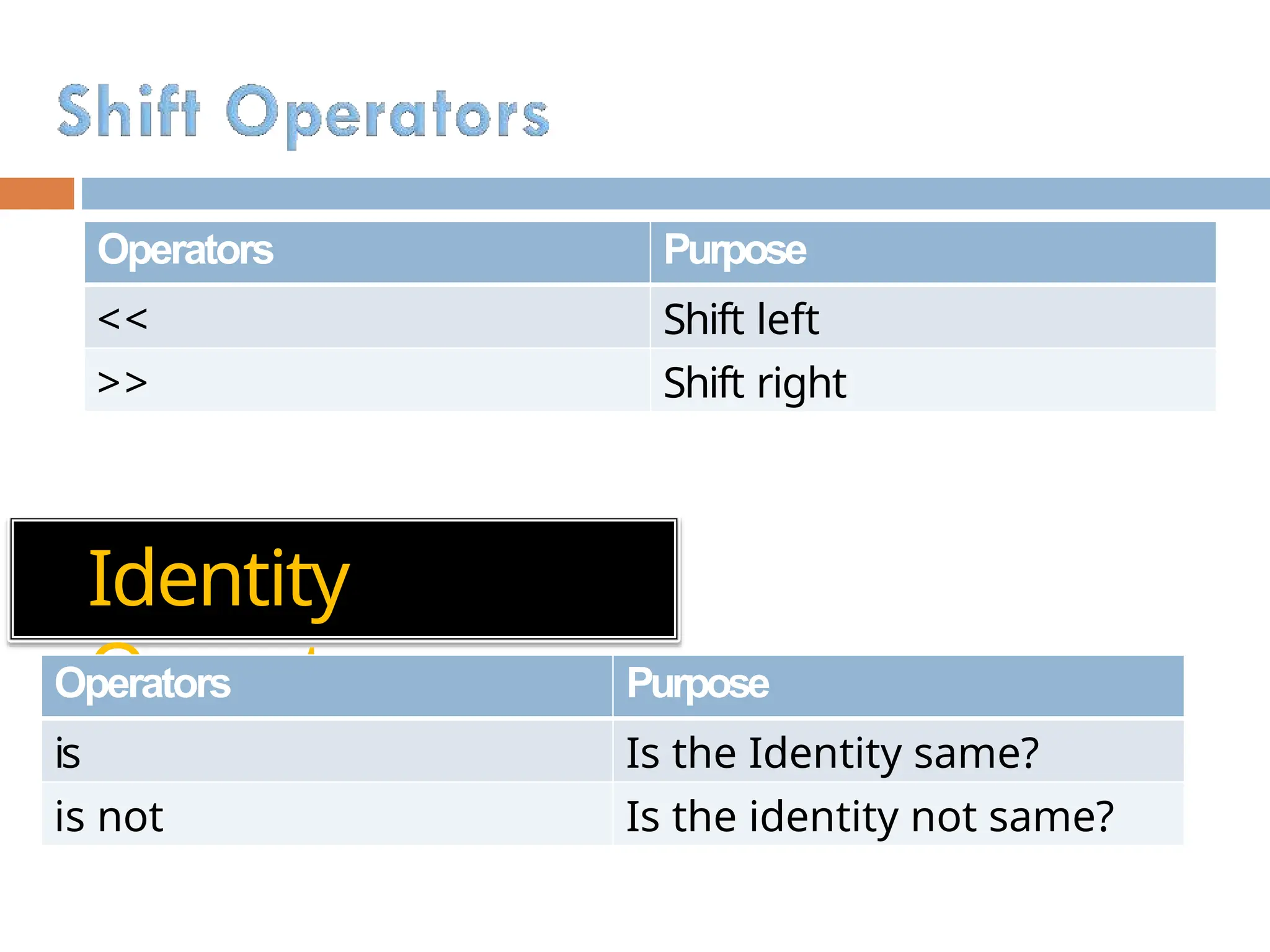
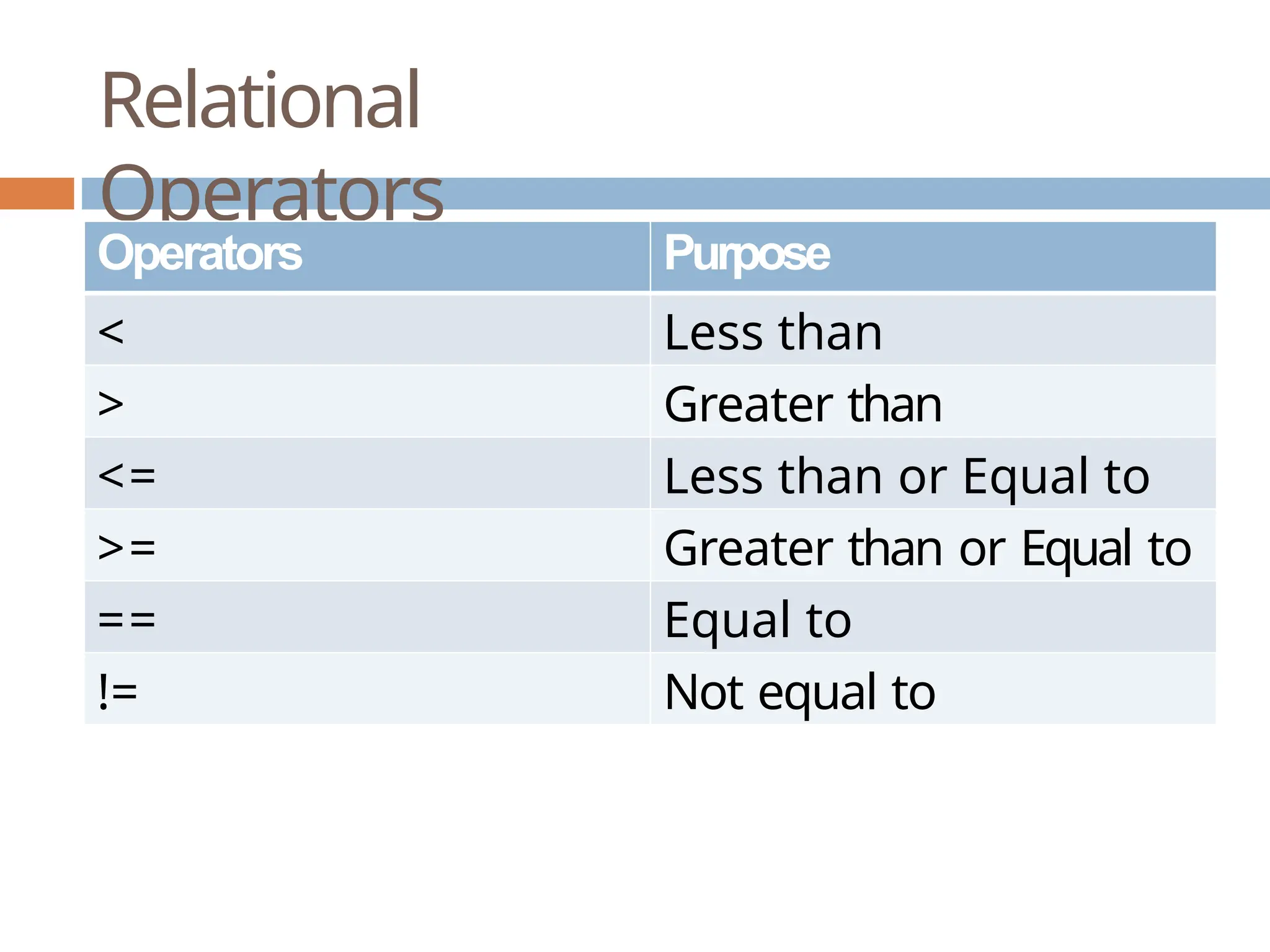
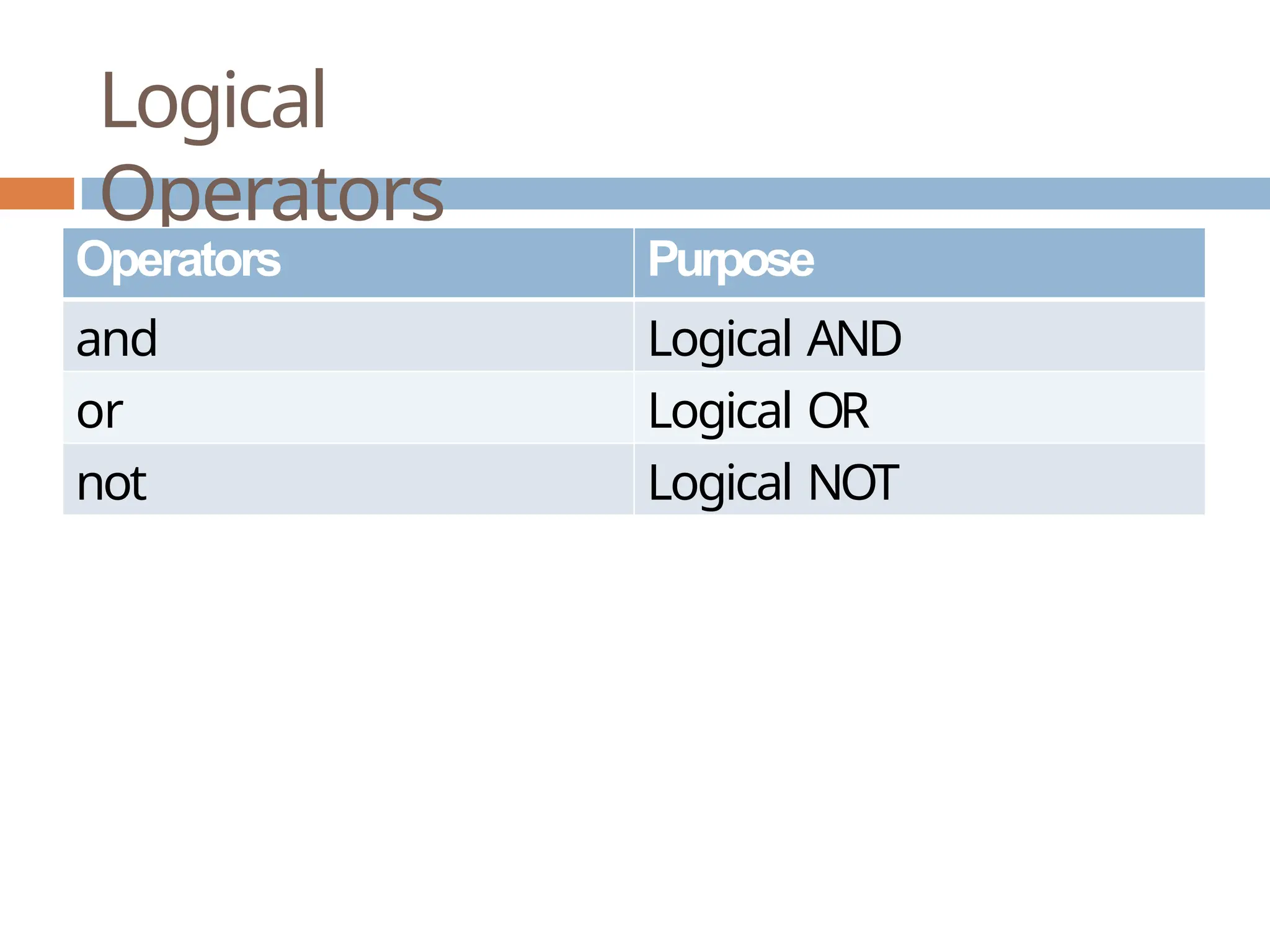

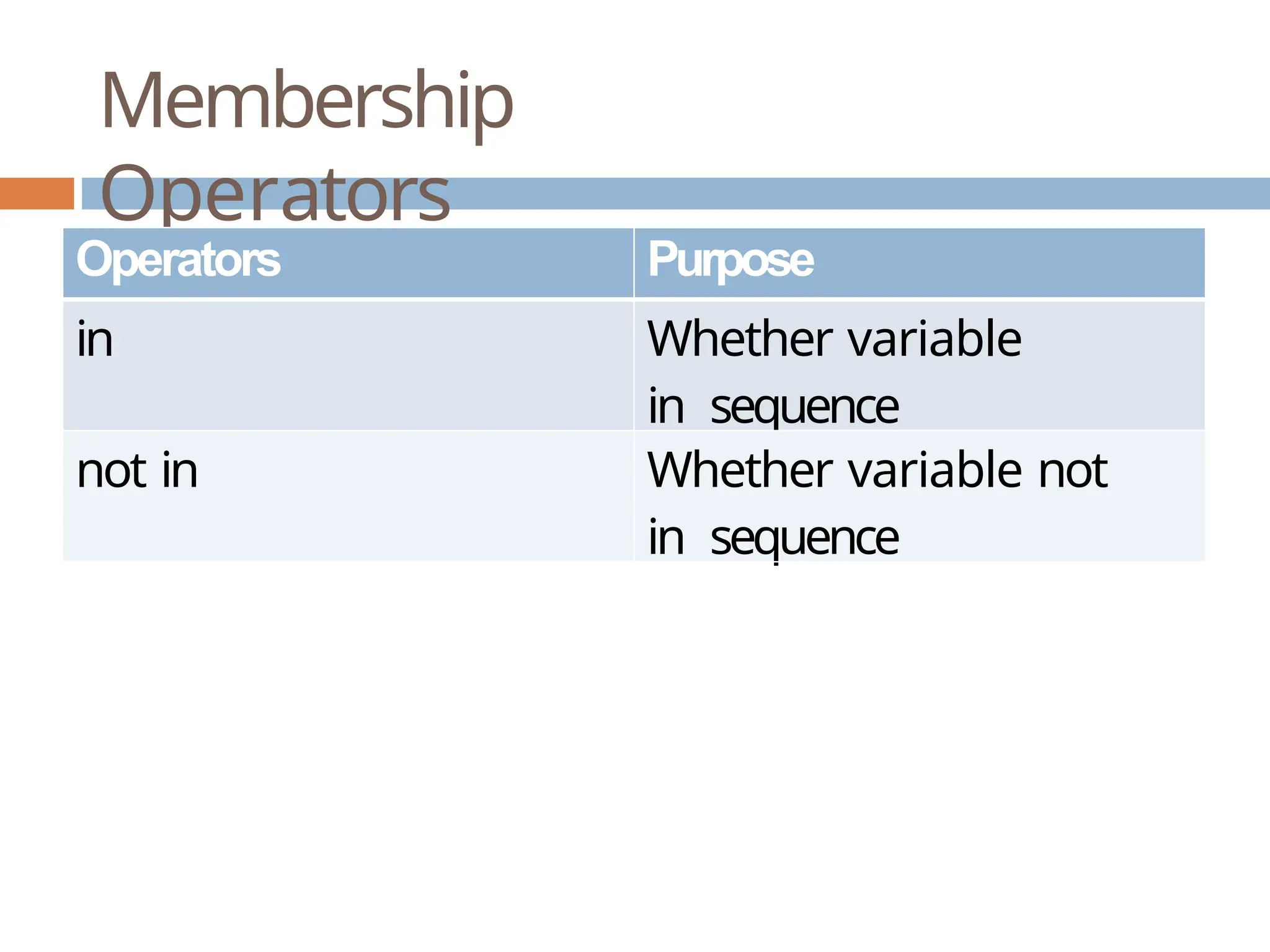
![Punctuato rs Punctuators are symbols that are used in programming languages to organize sentence structure, and indicate the rhythm and emphasis of expressions, statements, and program structure. Common punctuators are: „ “ # $ @ []{}=:;(),.](https://image.slidesharecdn.com/ch-3featuresofpython-250103121349-65d5f002/75/CH-3-FEATURES-OF-PYTHON-data-types-token-43-2048.jpg)

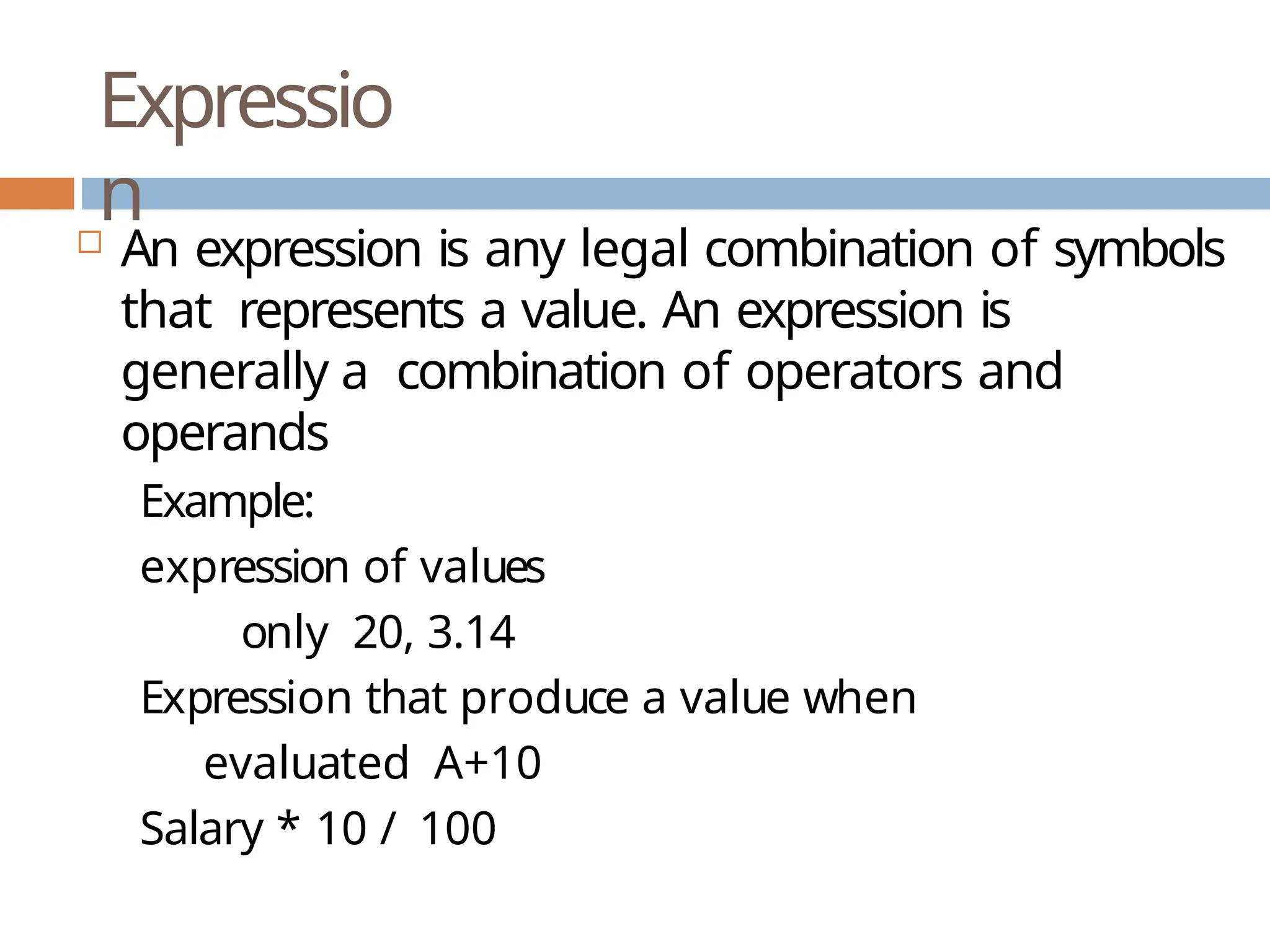
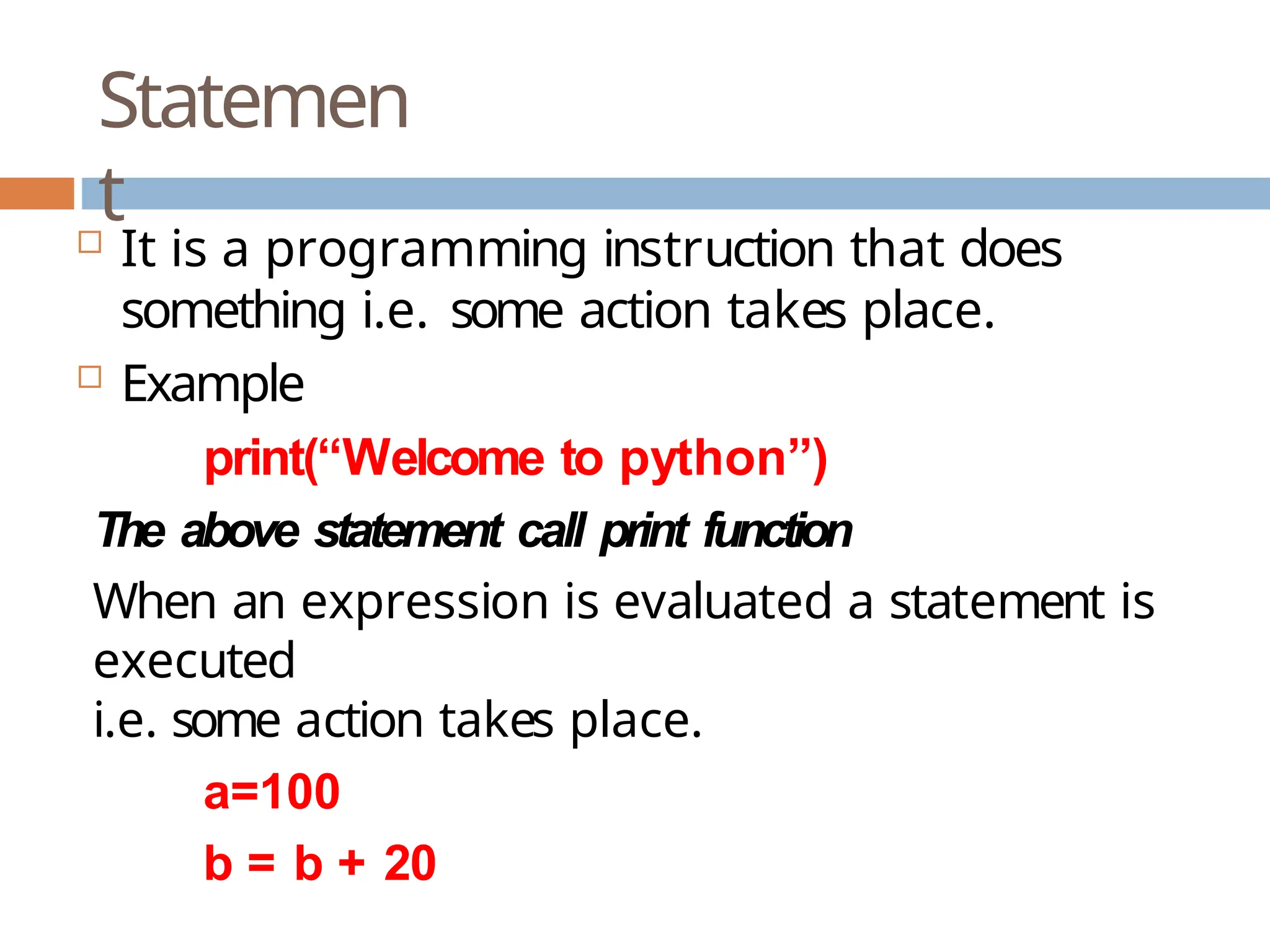
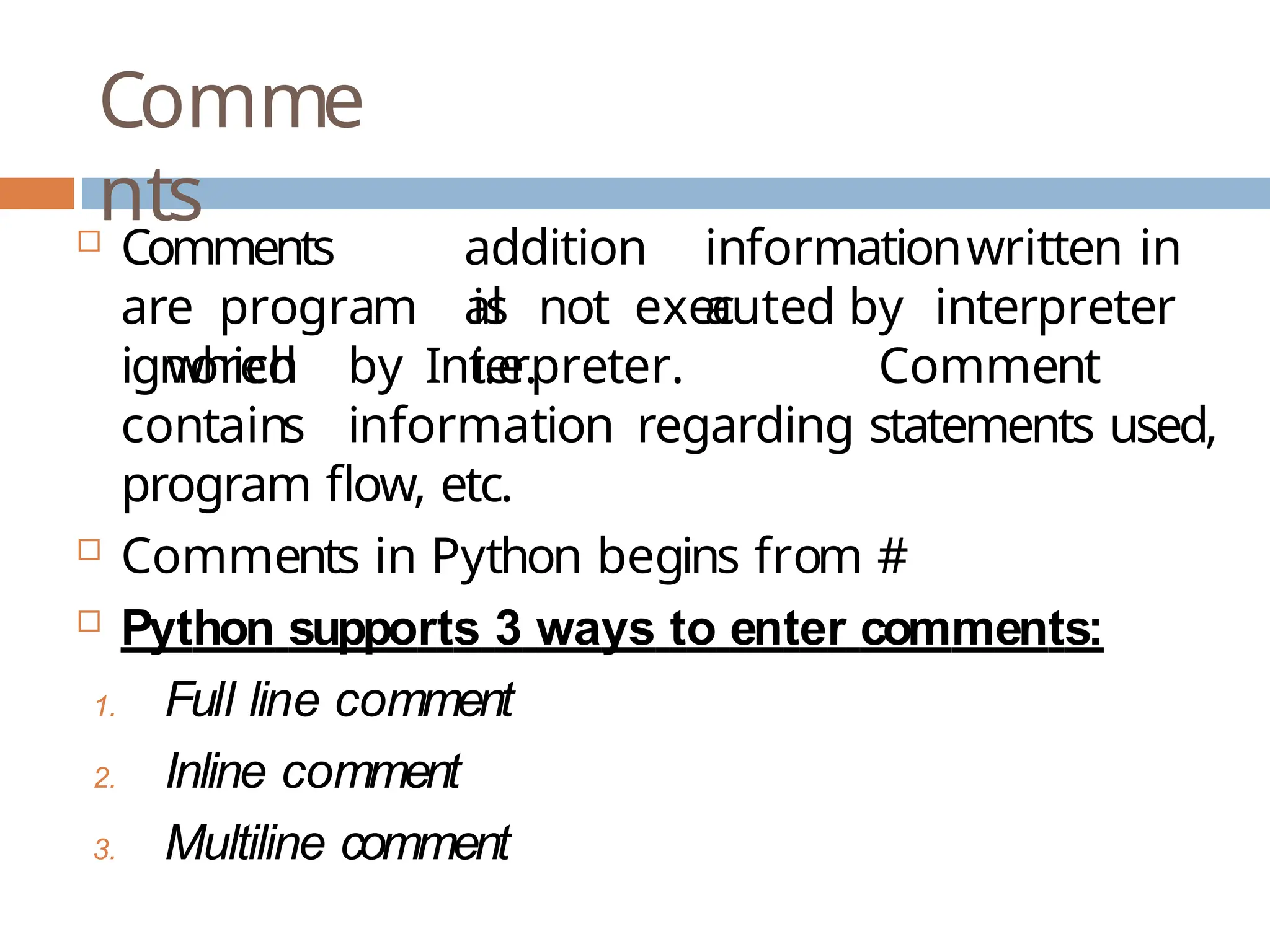
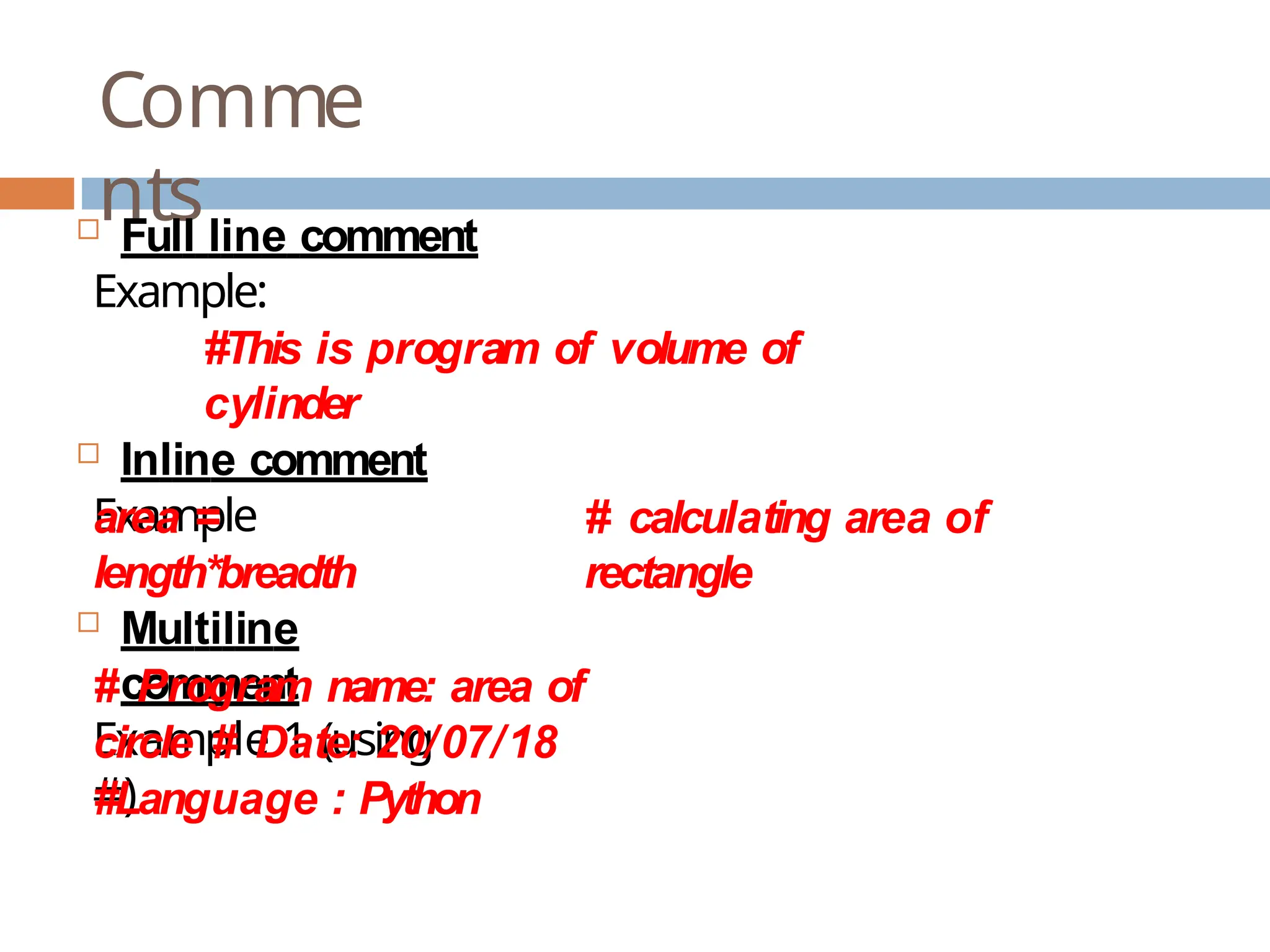
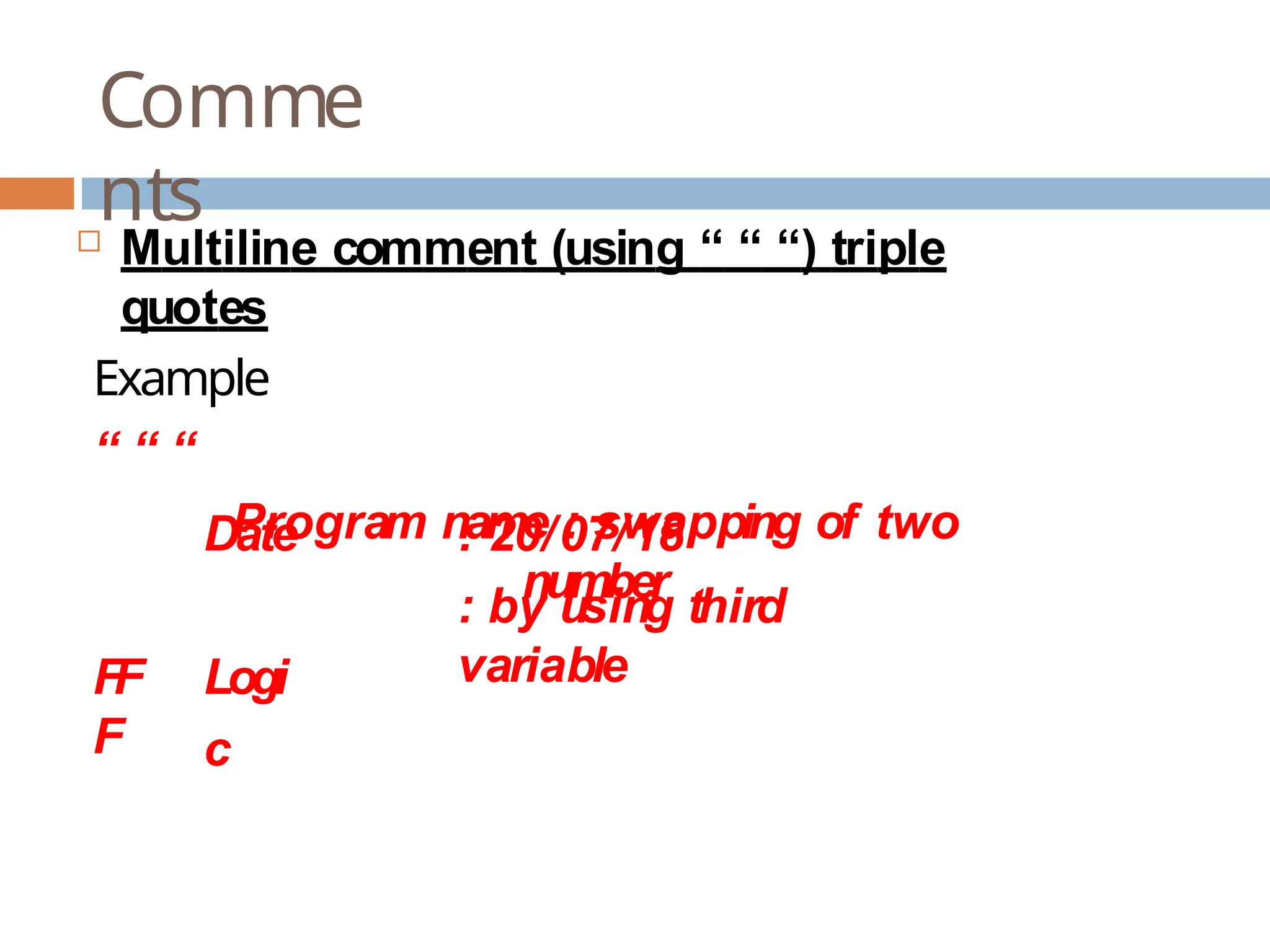
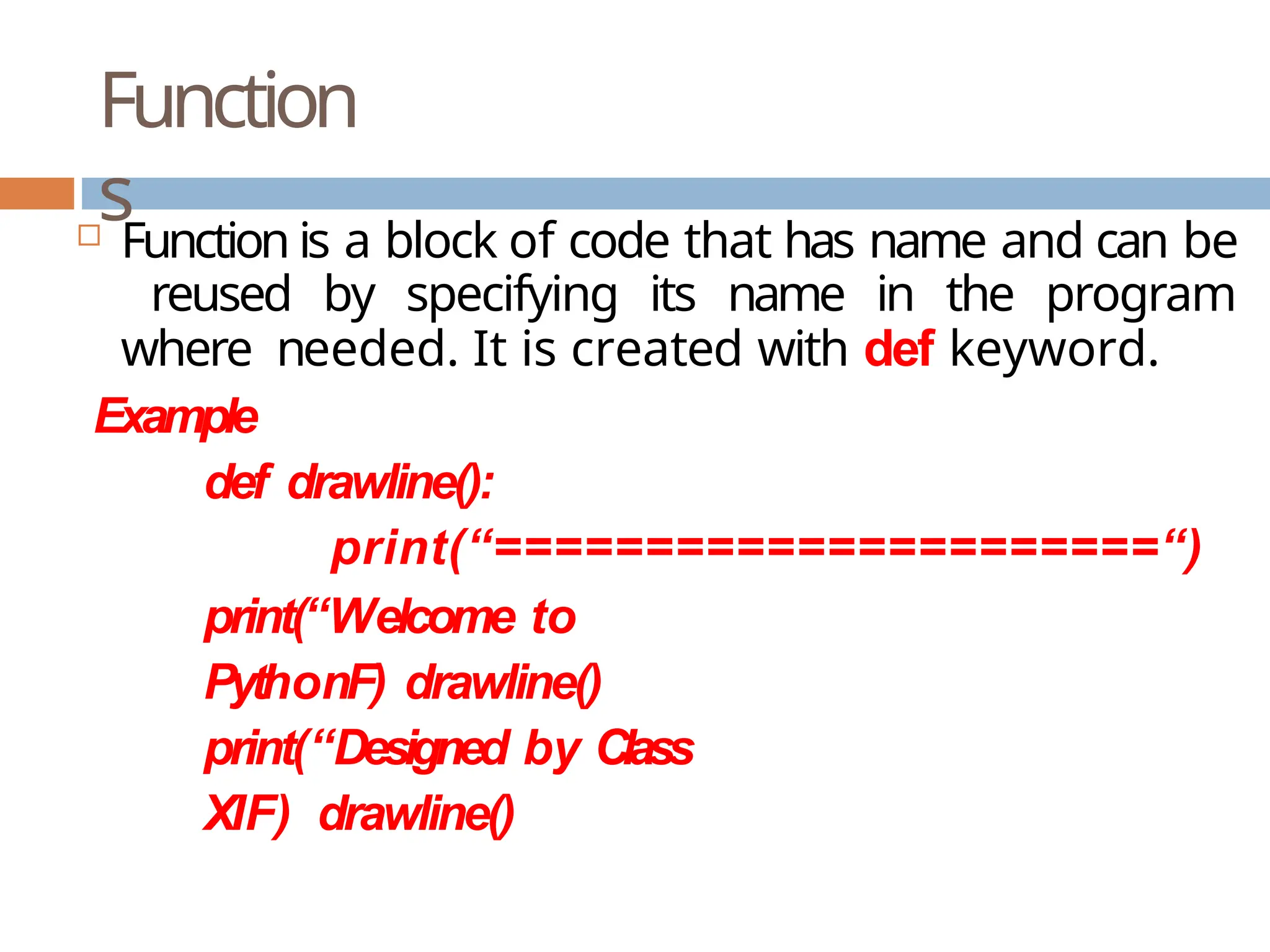
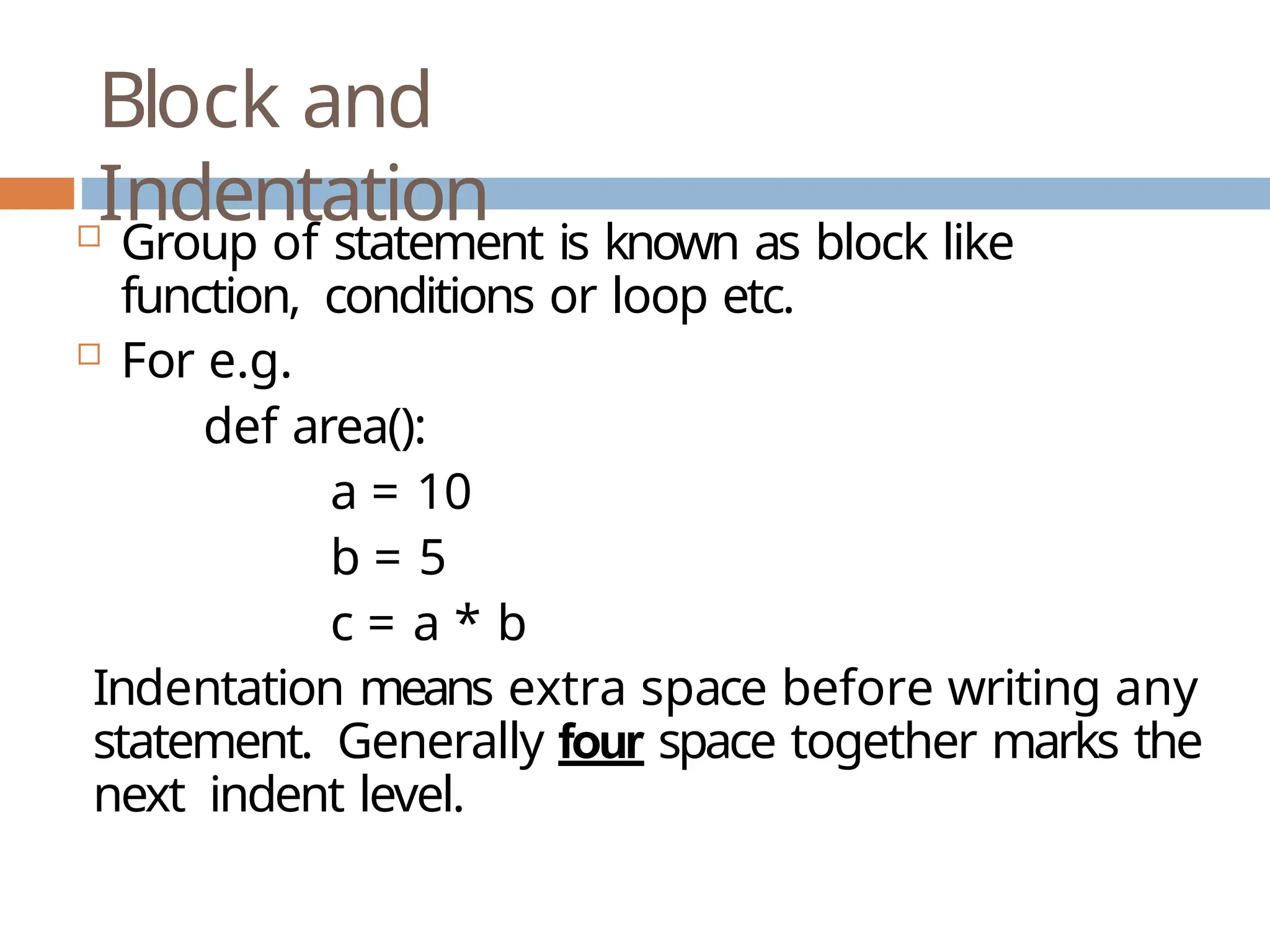
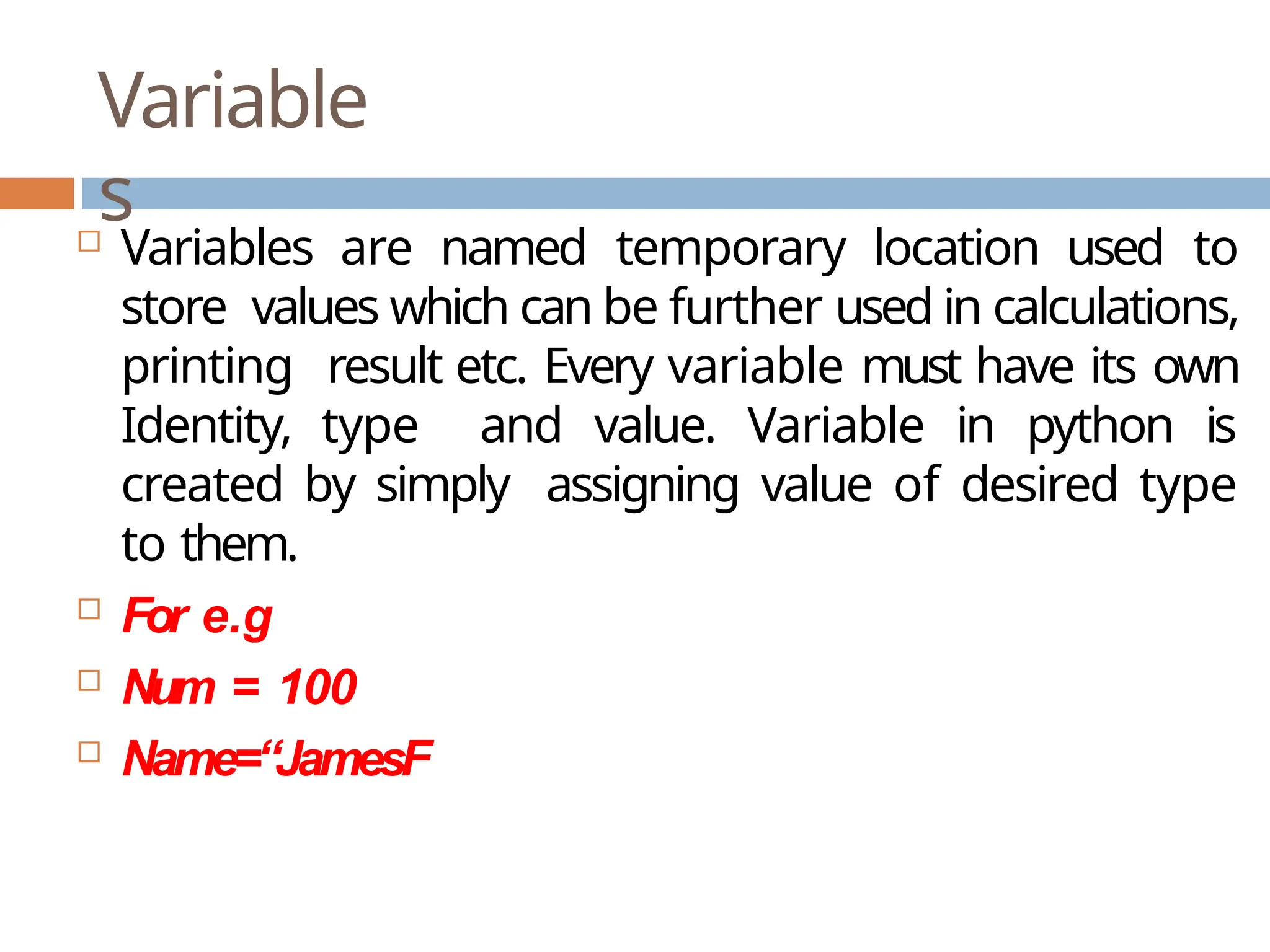
![Variable s Note: Python variables are not storage containers like other programming language. Let us analyze by example. In C++, if we declare a variable radius: radius = 100 [suppose memory address is 41260] Now we again assign new value to radius radius = 500 Now the memory address will be still same only value will change](https://image.slidesharecdn.com/ch-3featuresofpython-250103121349-65d5f002/75/CH-3-FEATURES-OF-PYTHON-data-types-token-53-2048.jpg)
![Variable s Now let us take example of Python: radius = 100 [memory address 3568] radius = 700 [memory addres s 8546] Now you can see that In python, each time you assign new value to variable it will not use the same memory address and new memory will be assigned to variable. In python the location they refer to changes every time their value change.(This rule is not for all types of variables)](https://image.slidesharecdn.com/ch-3featuresofpython-250103121349-65d5f002/75/CH-3-FEATURES-OF-PYTHON-data-types-token-54-2048.jpg)

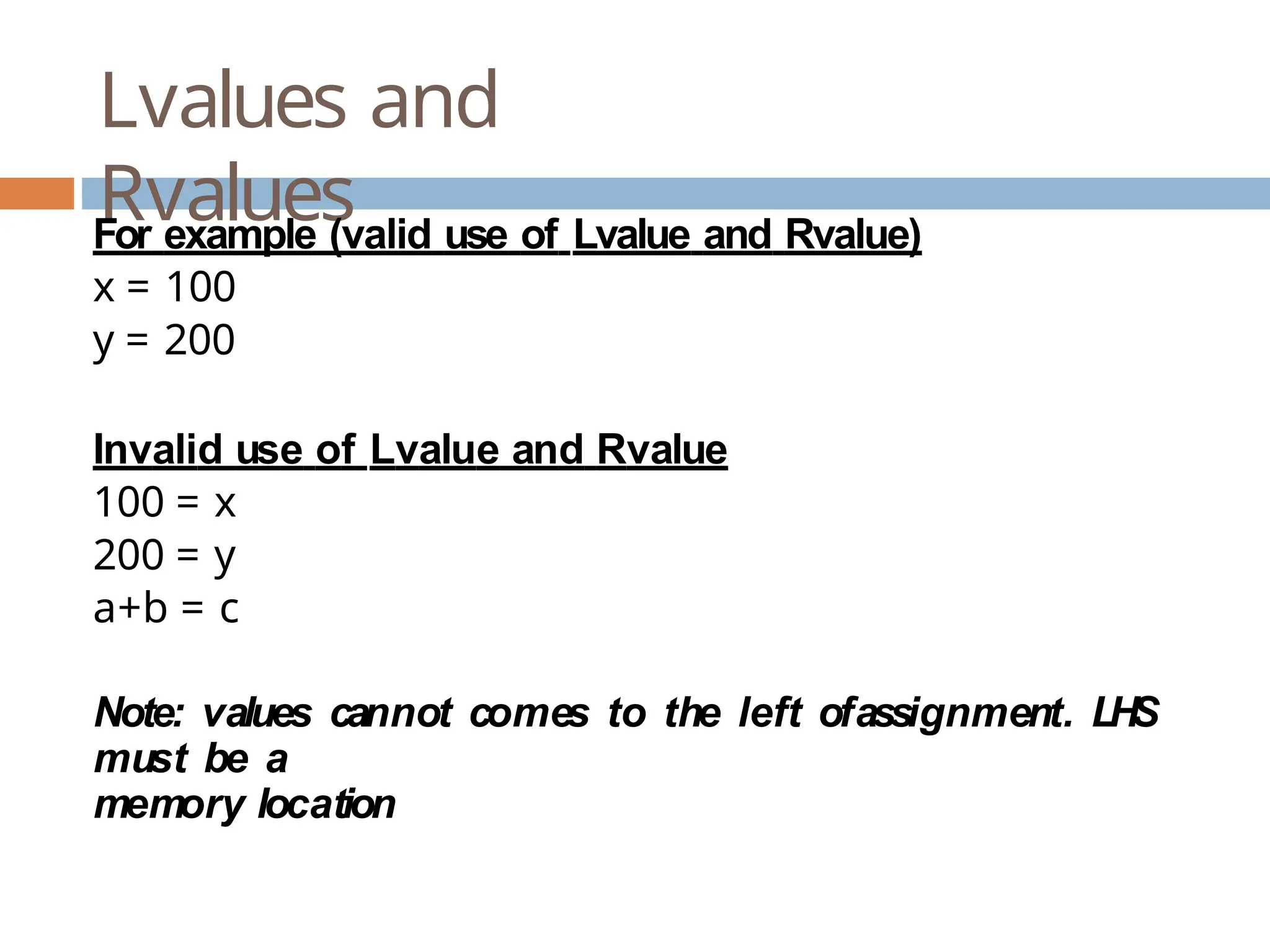
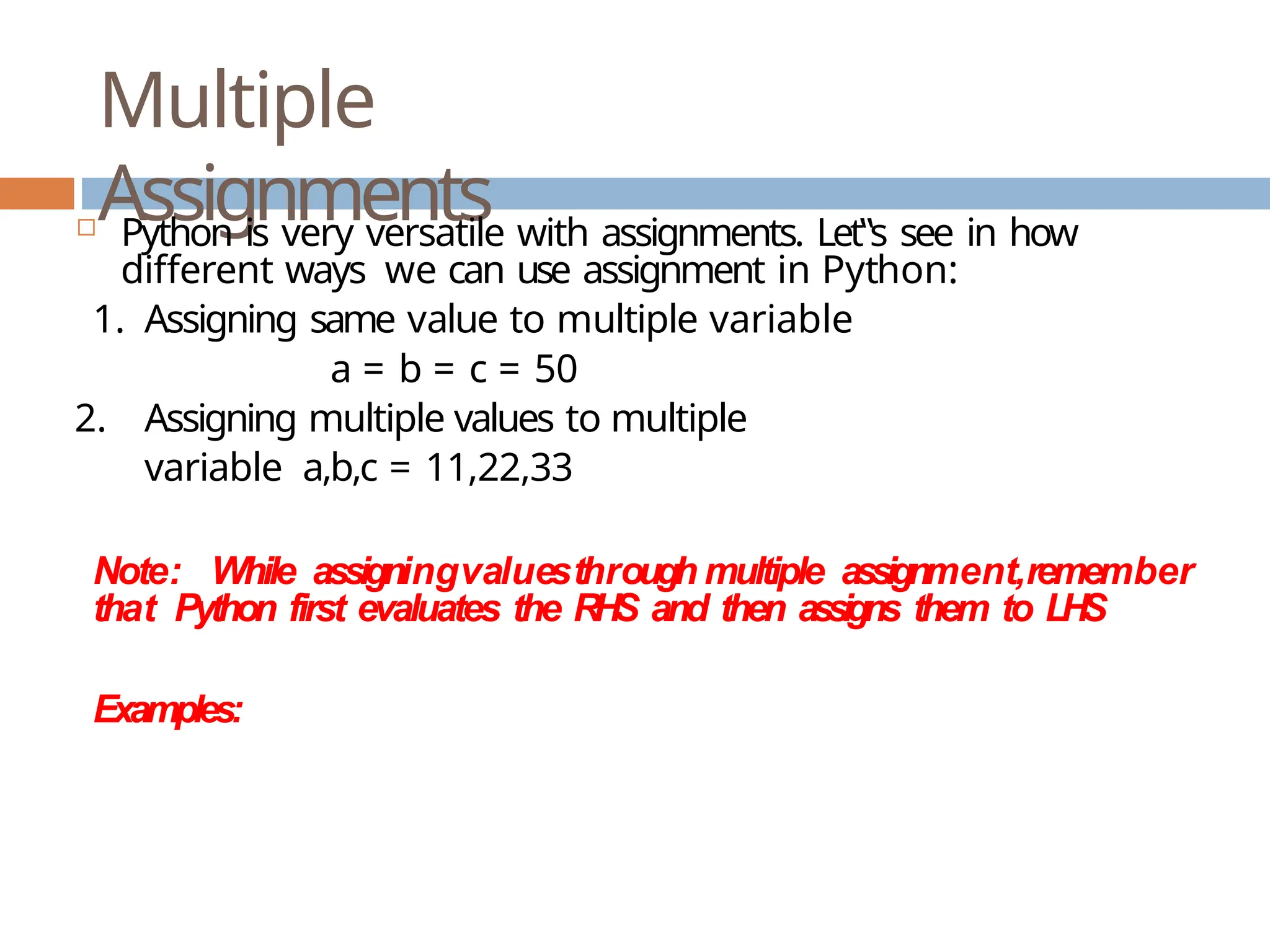
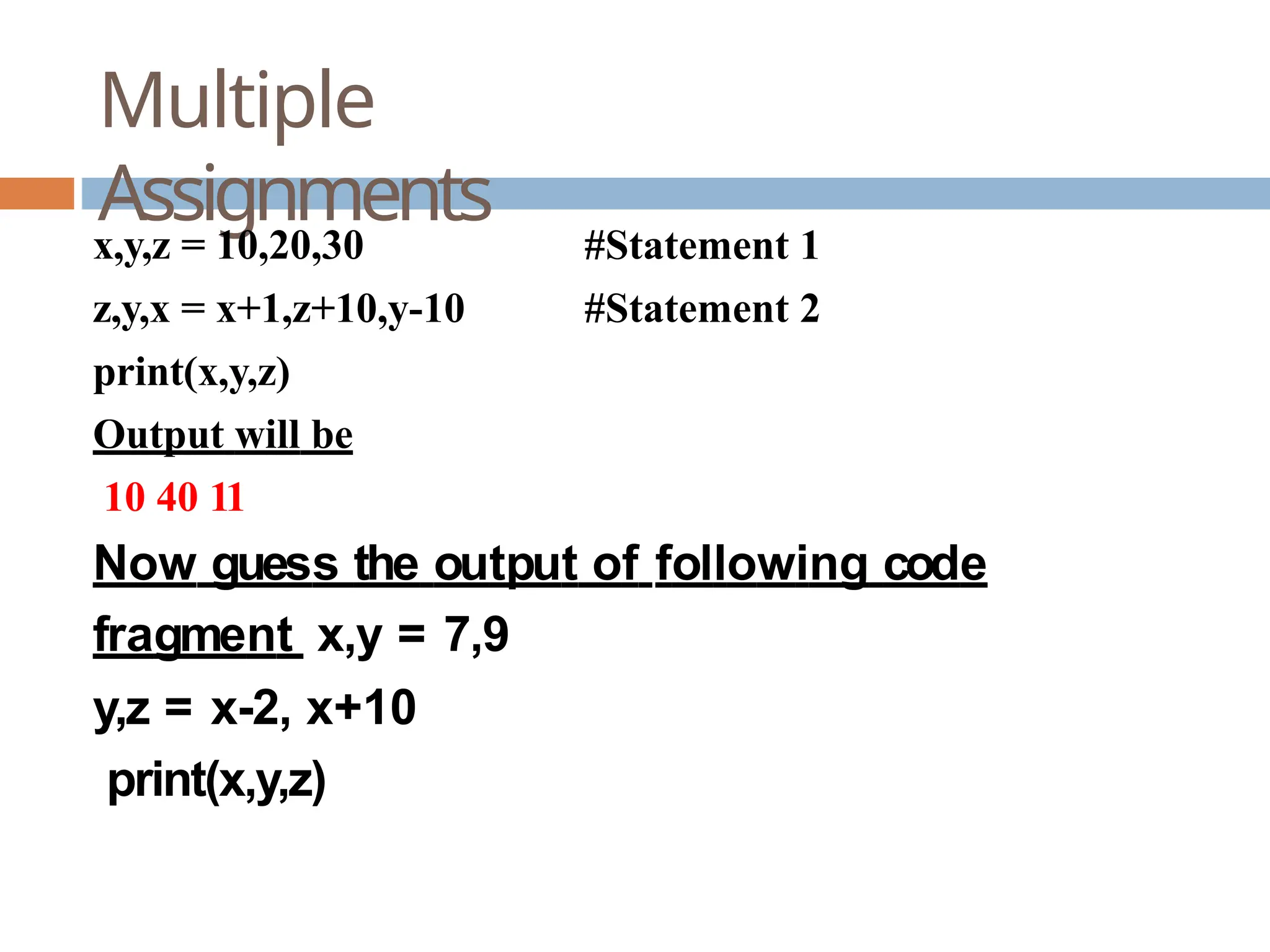

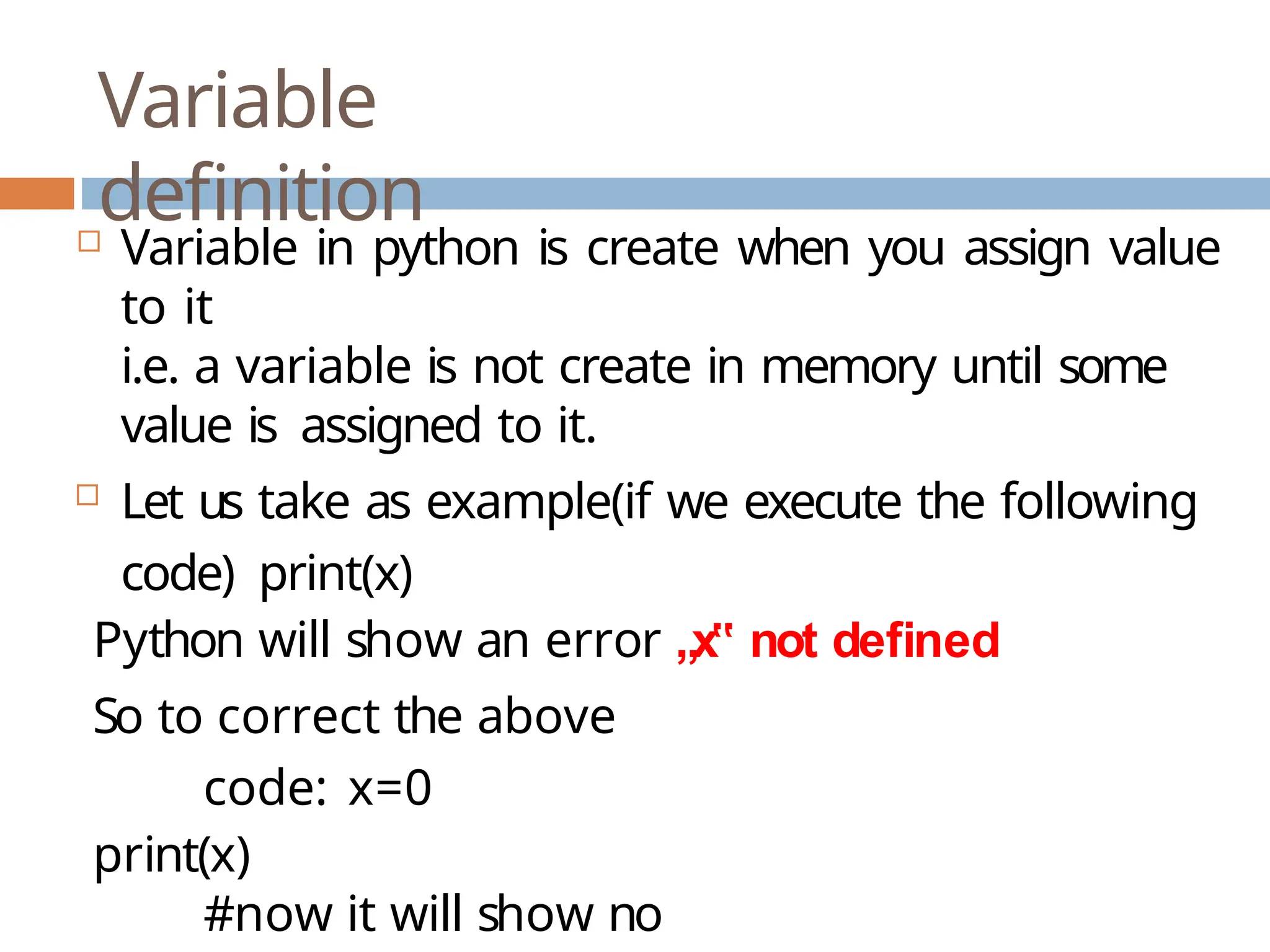

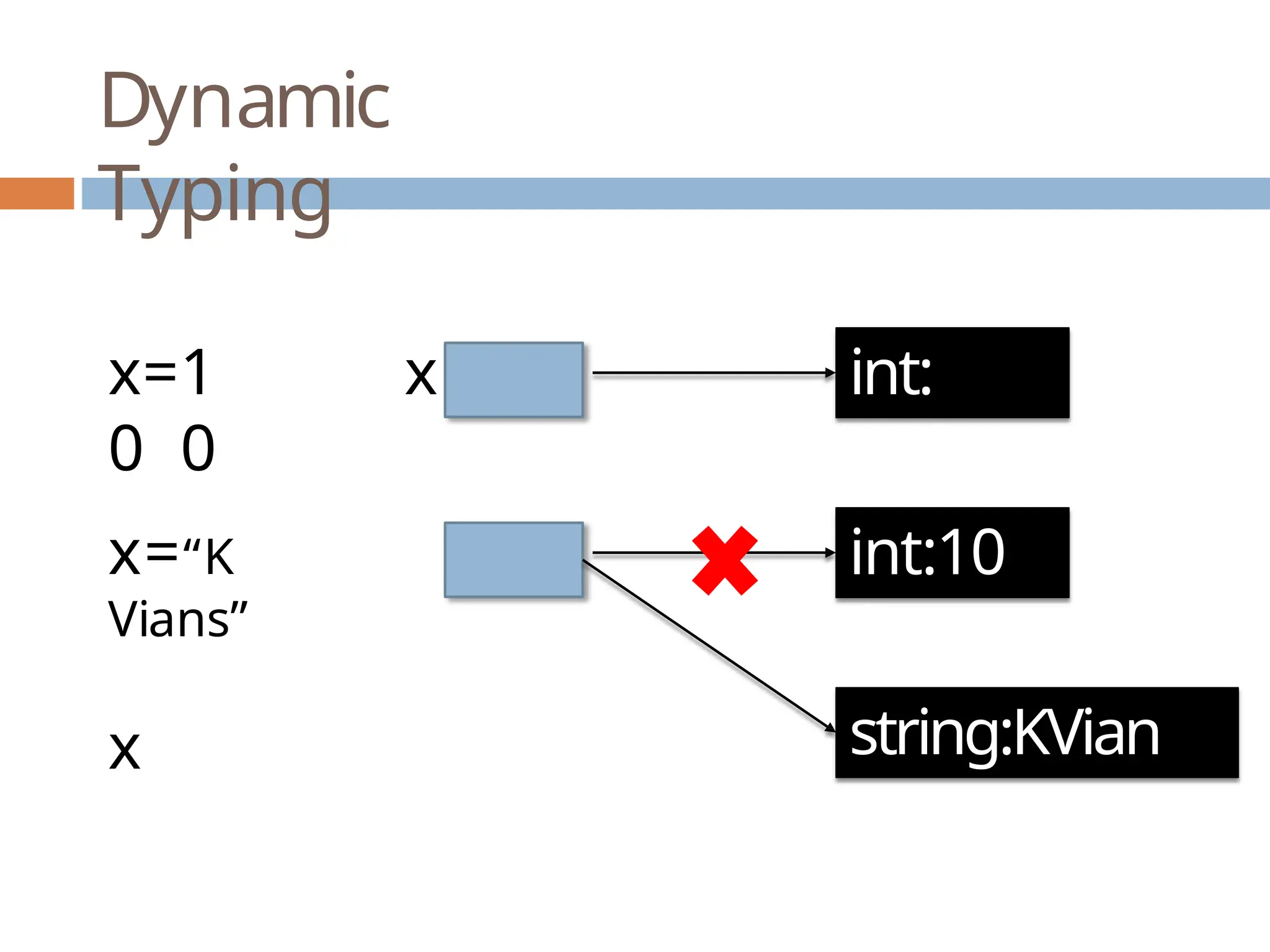

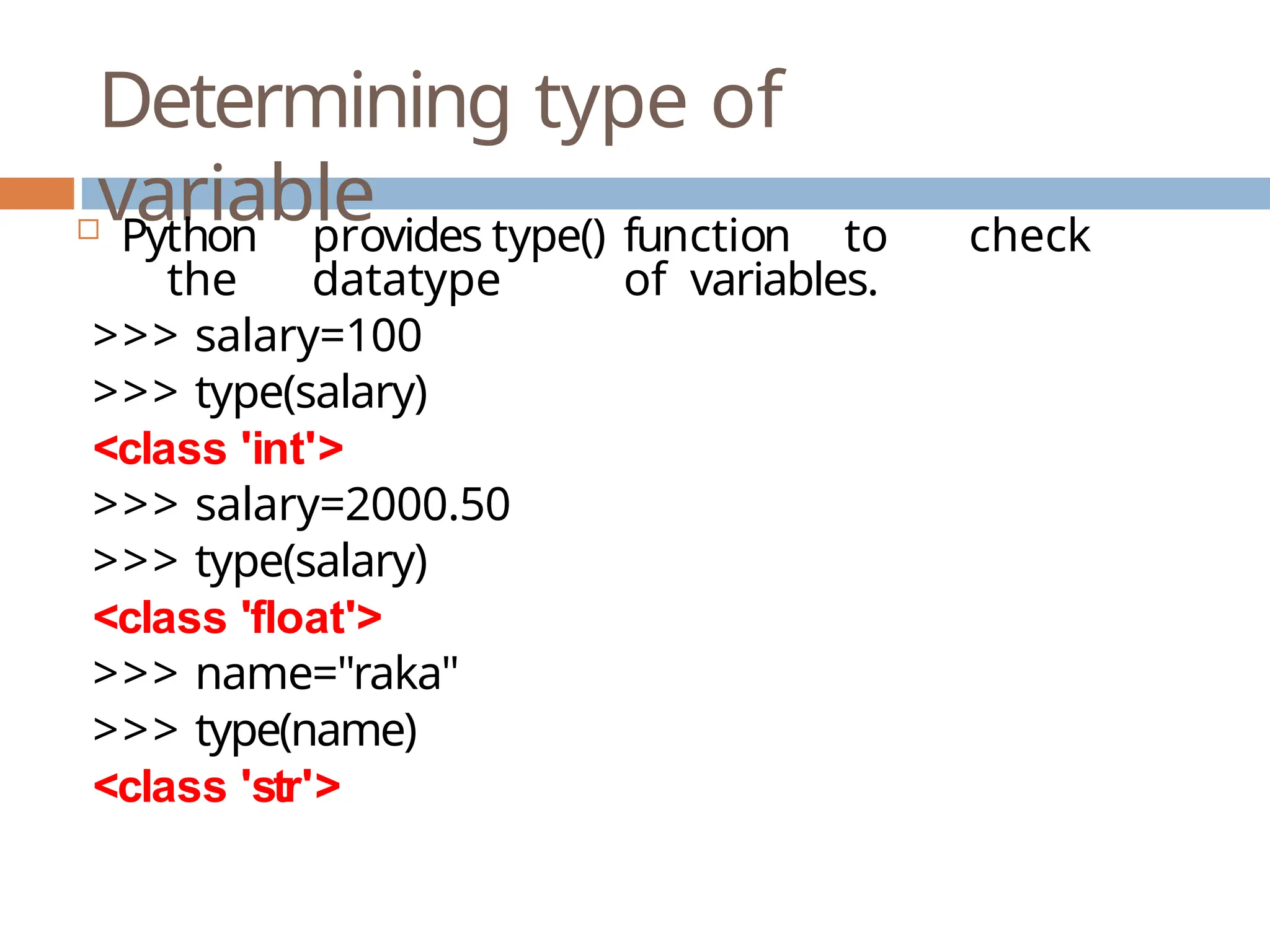
![Output through print() Python allows to display output using print(). Syntax: print(message_to_print[,sep=“string”,end=“string”] ) Example 1 print(“Welcom e”) Example 2 Age=20 print(“Your age is “, Age)](https://image.slidesharecdn.com/ch-3featuresofpython-250103121349-65d5f002/75/CH-3-FEATURES-OF-PYTHON-data-types-token-65-2048.jpg)


